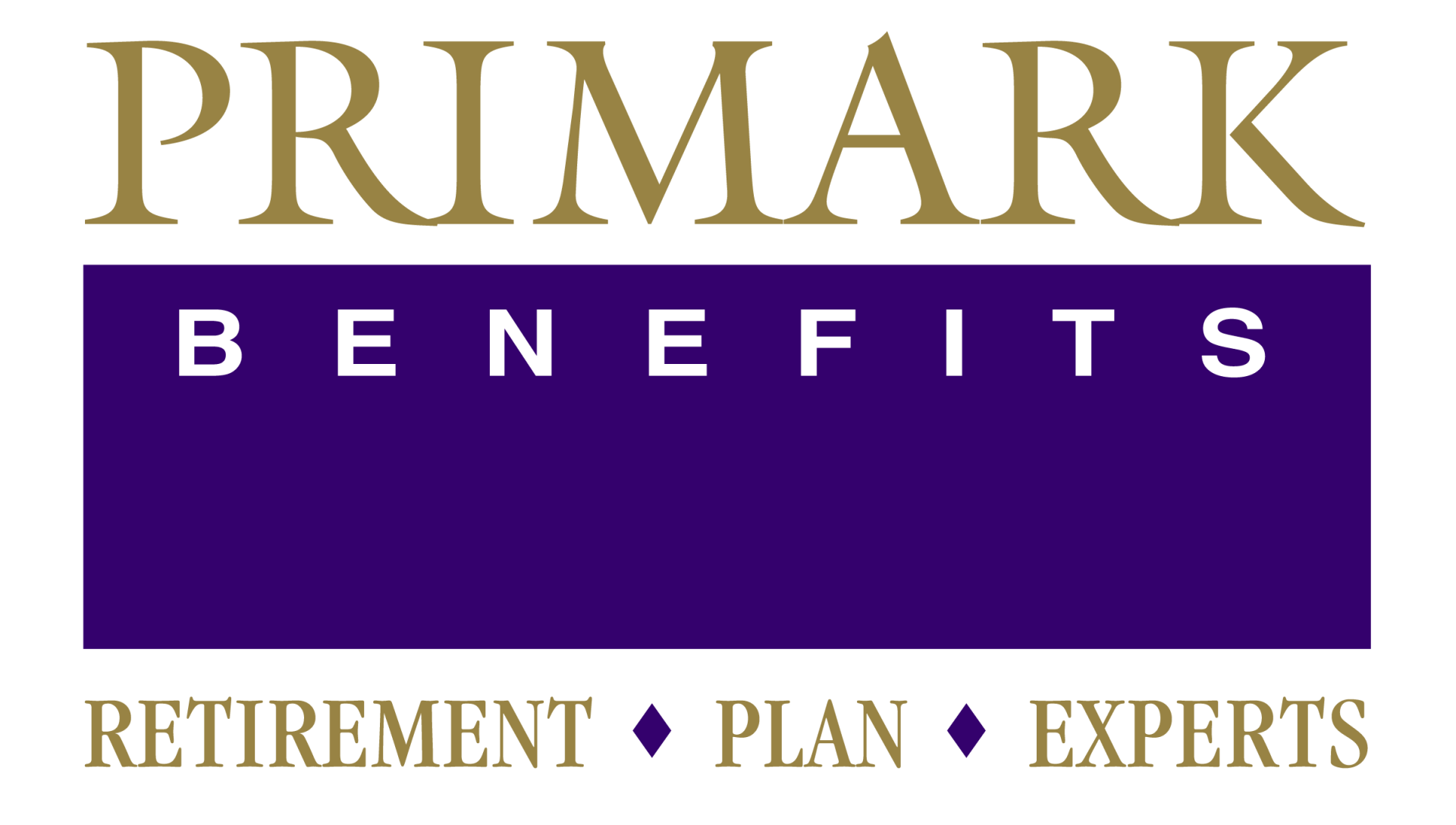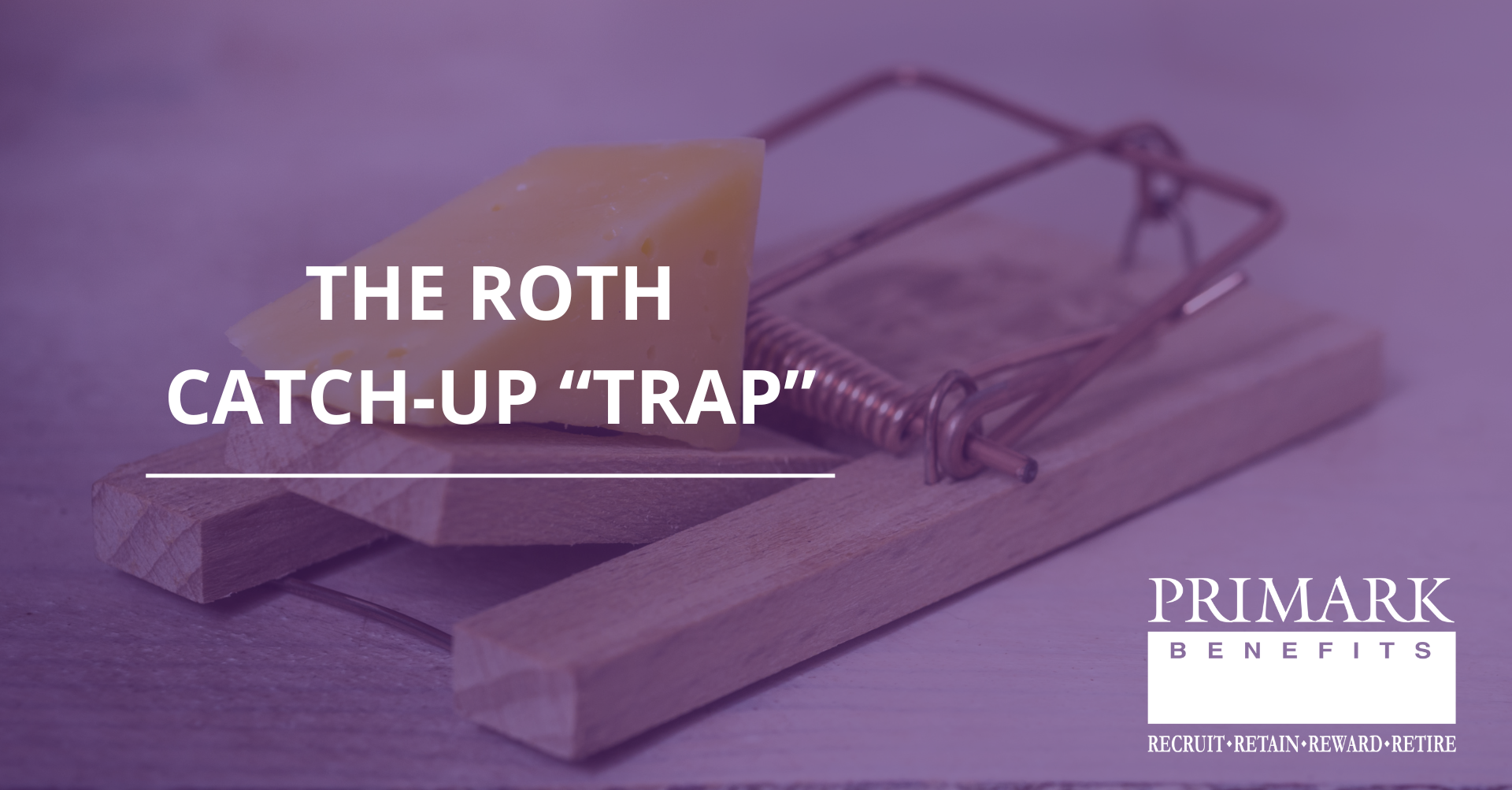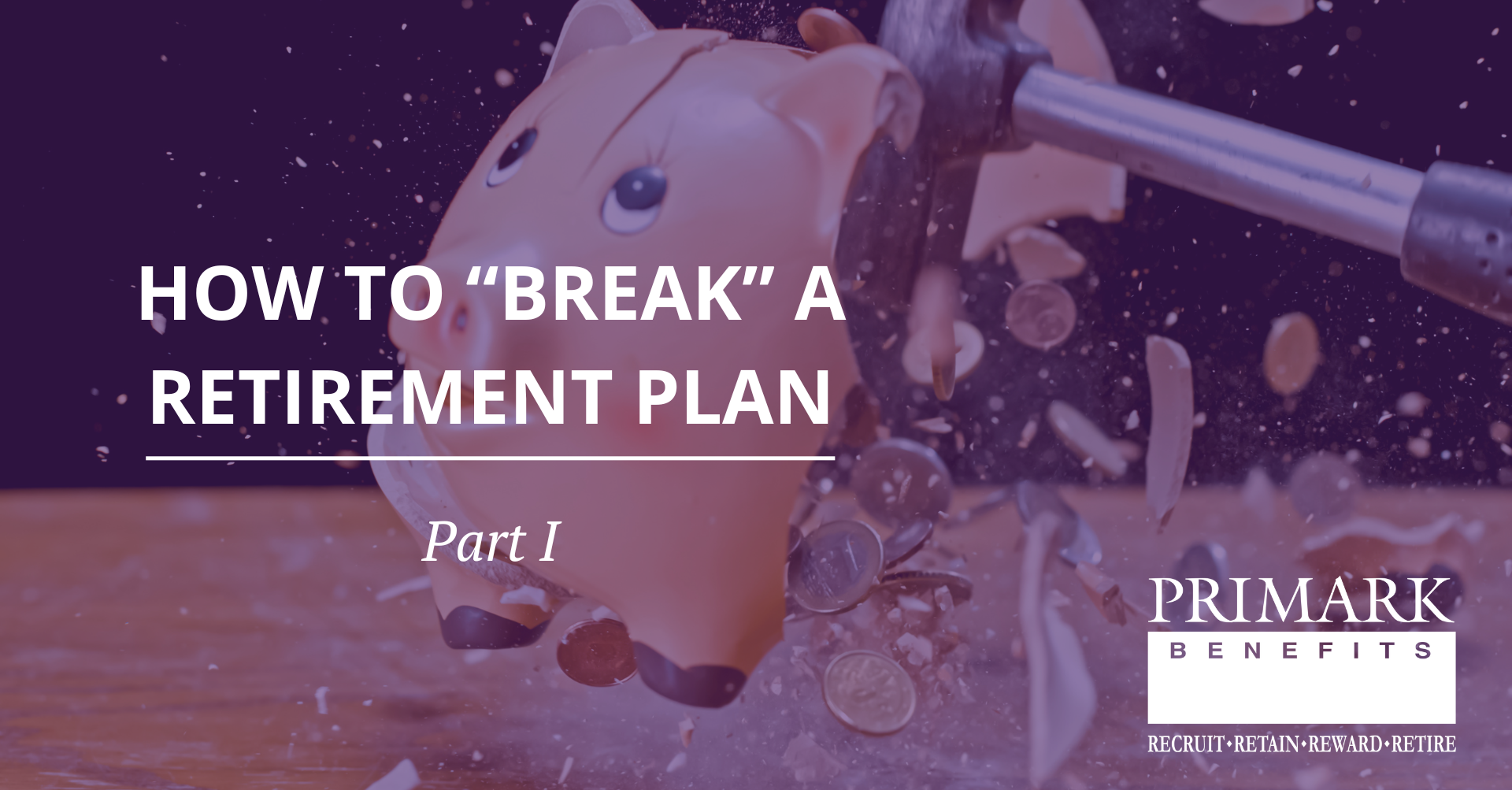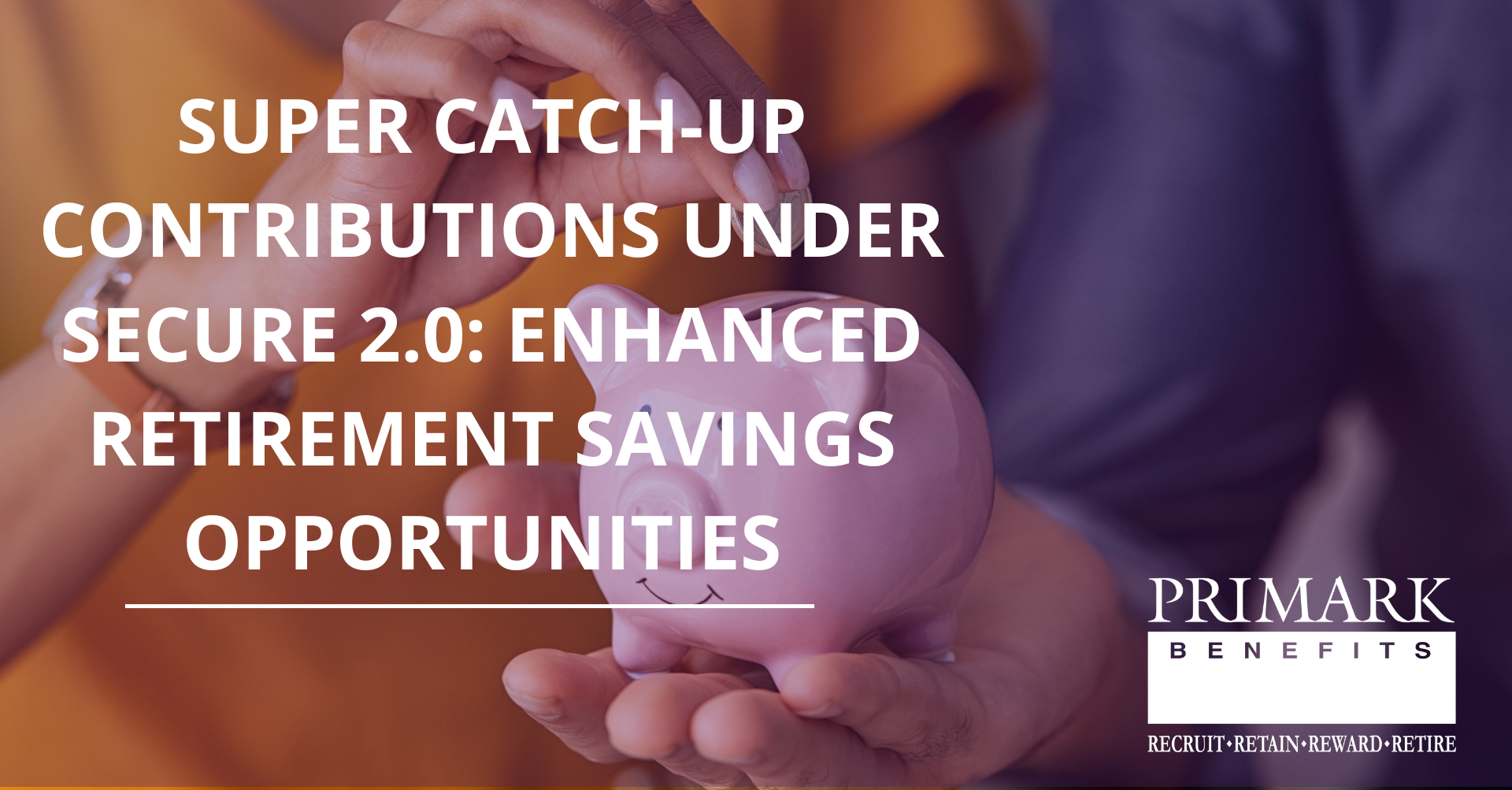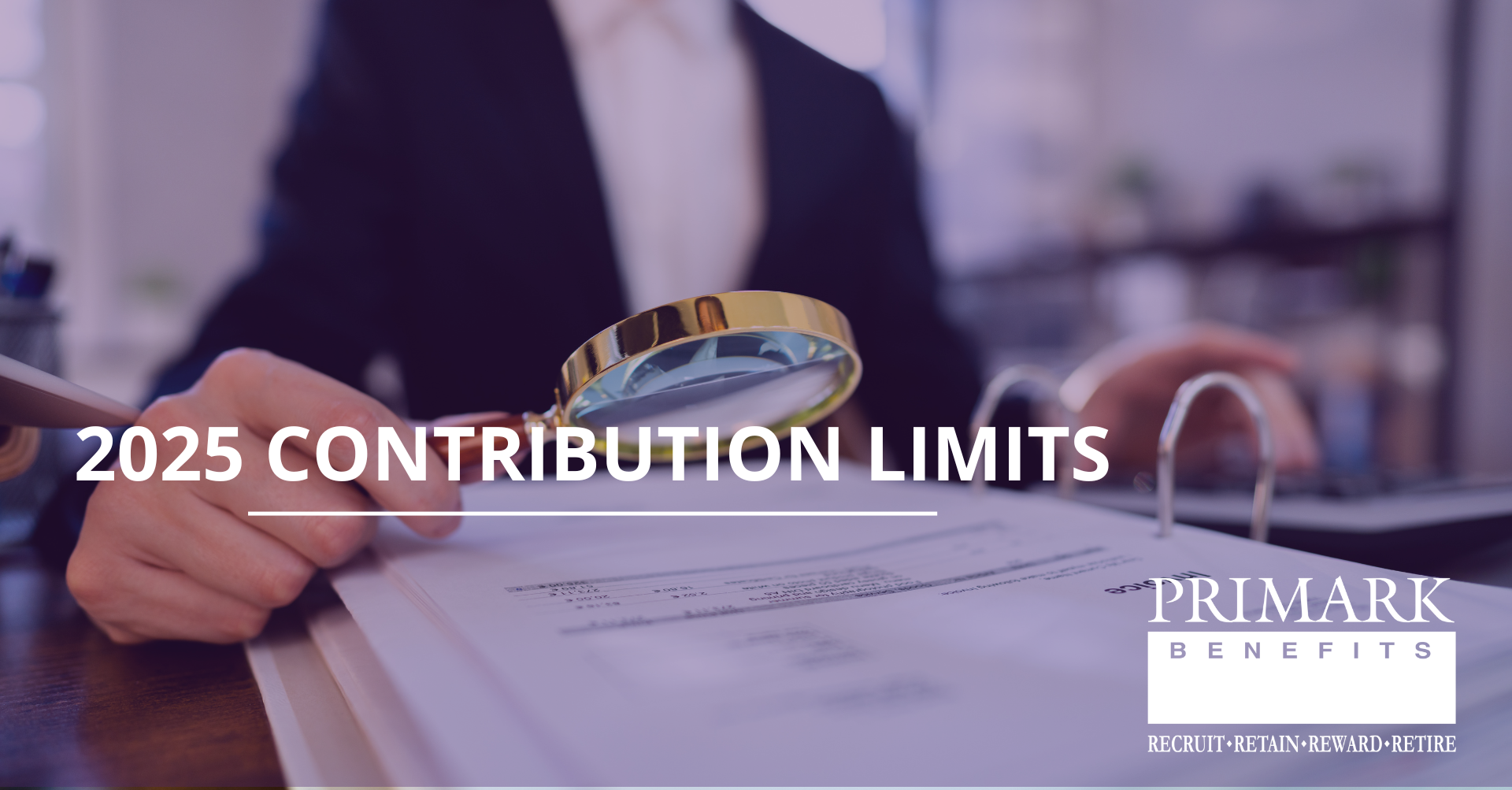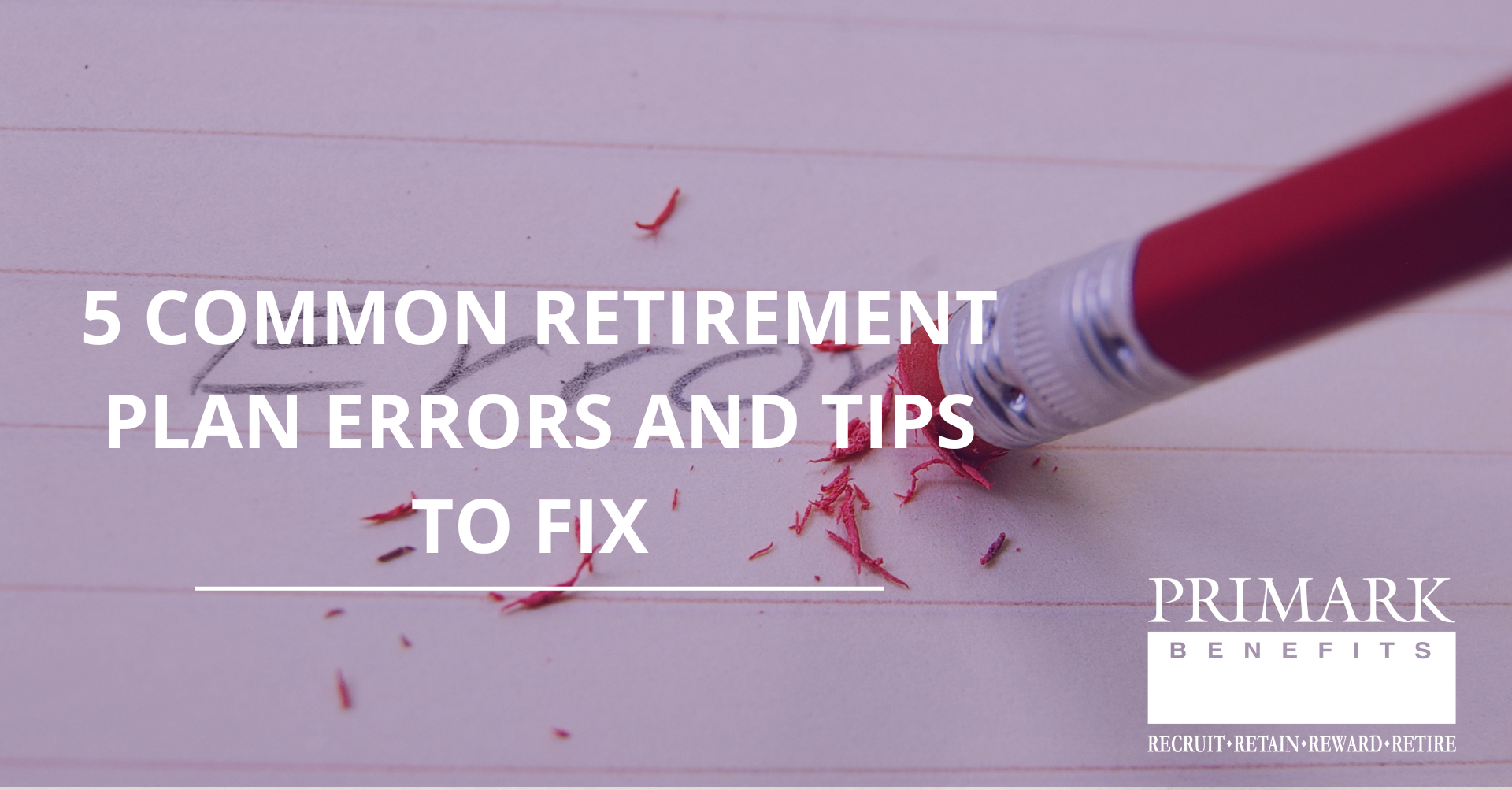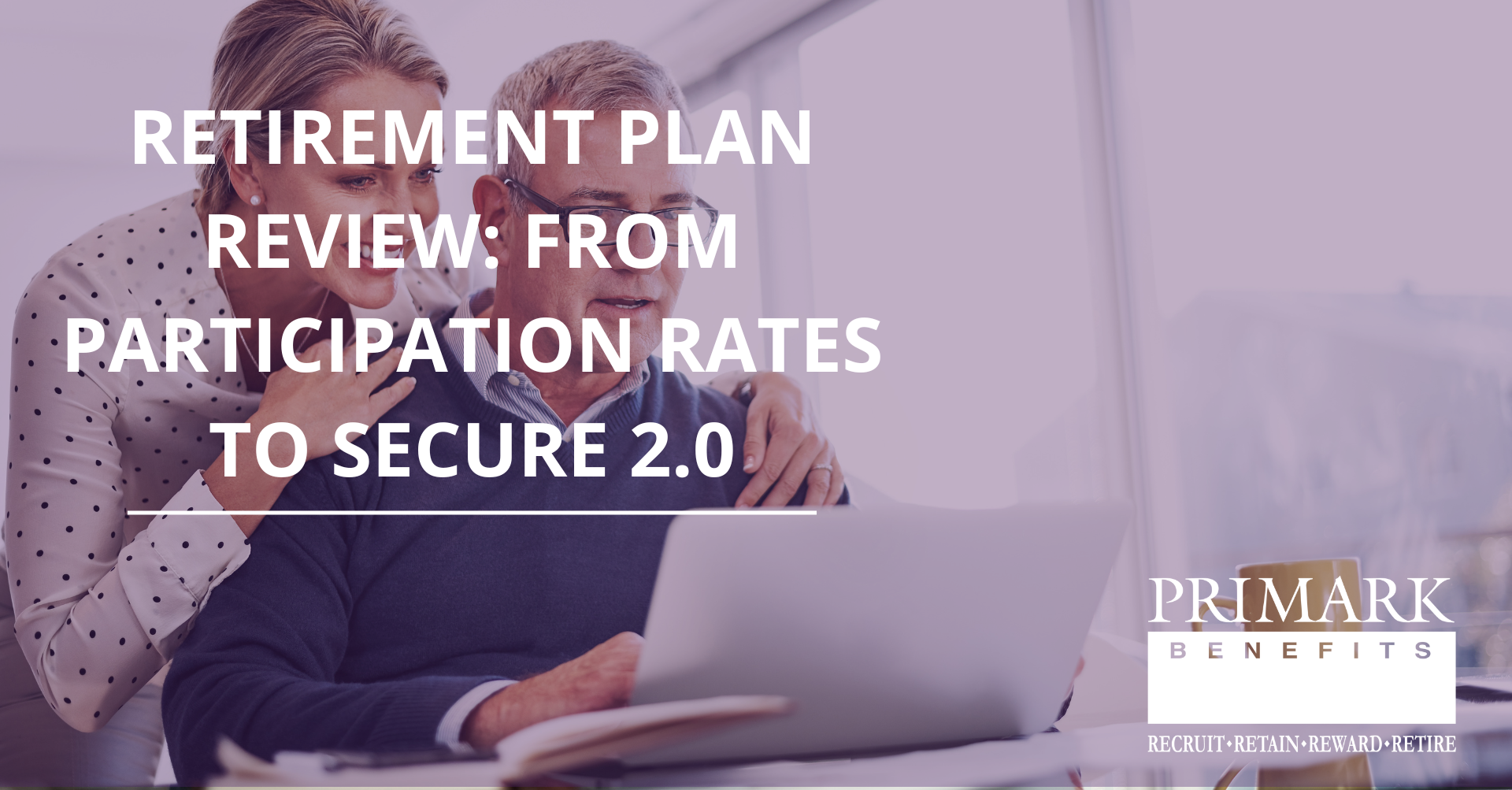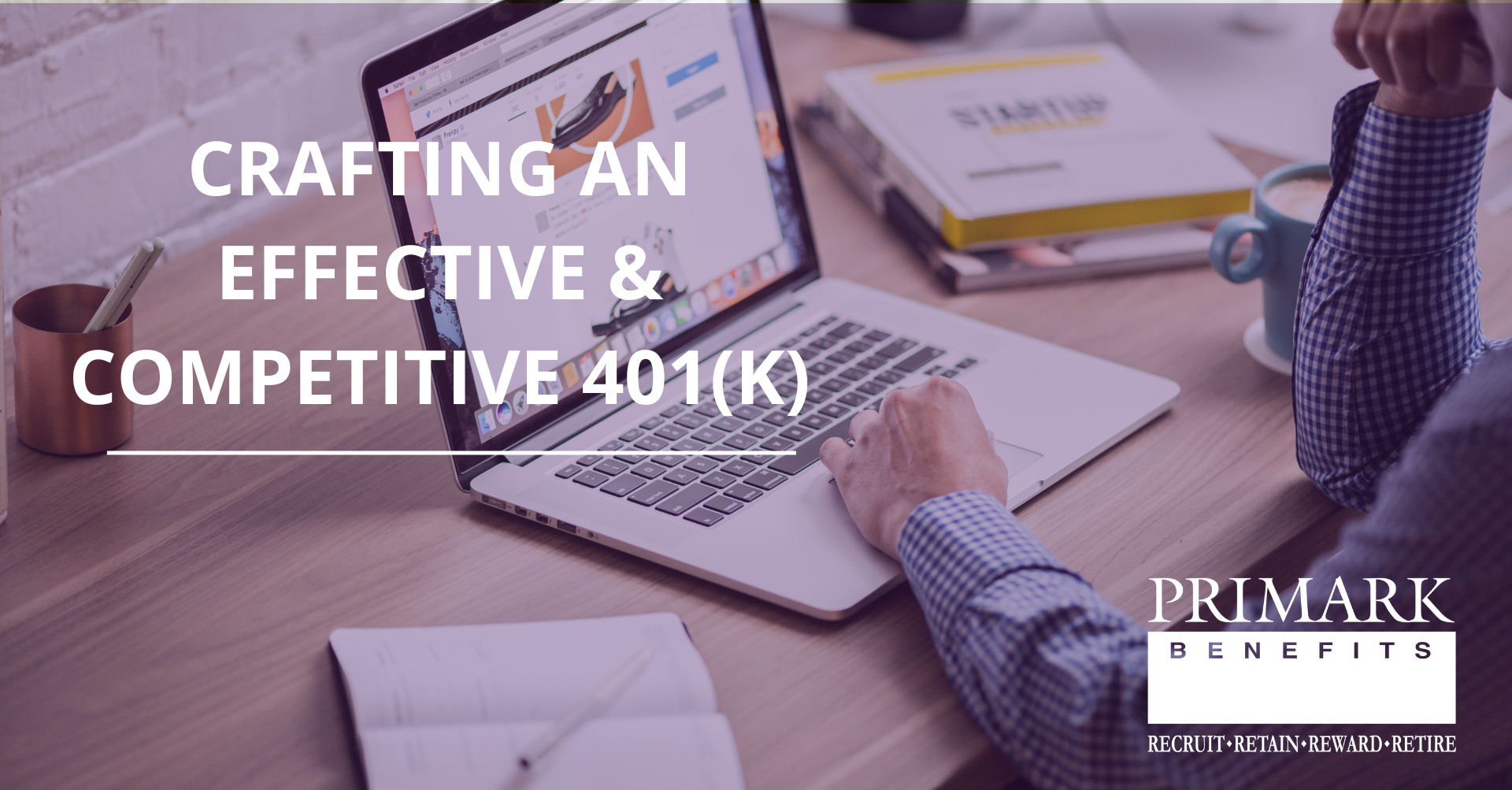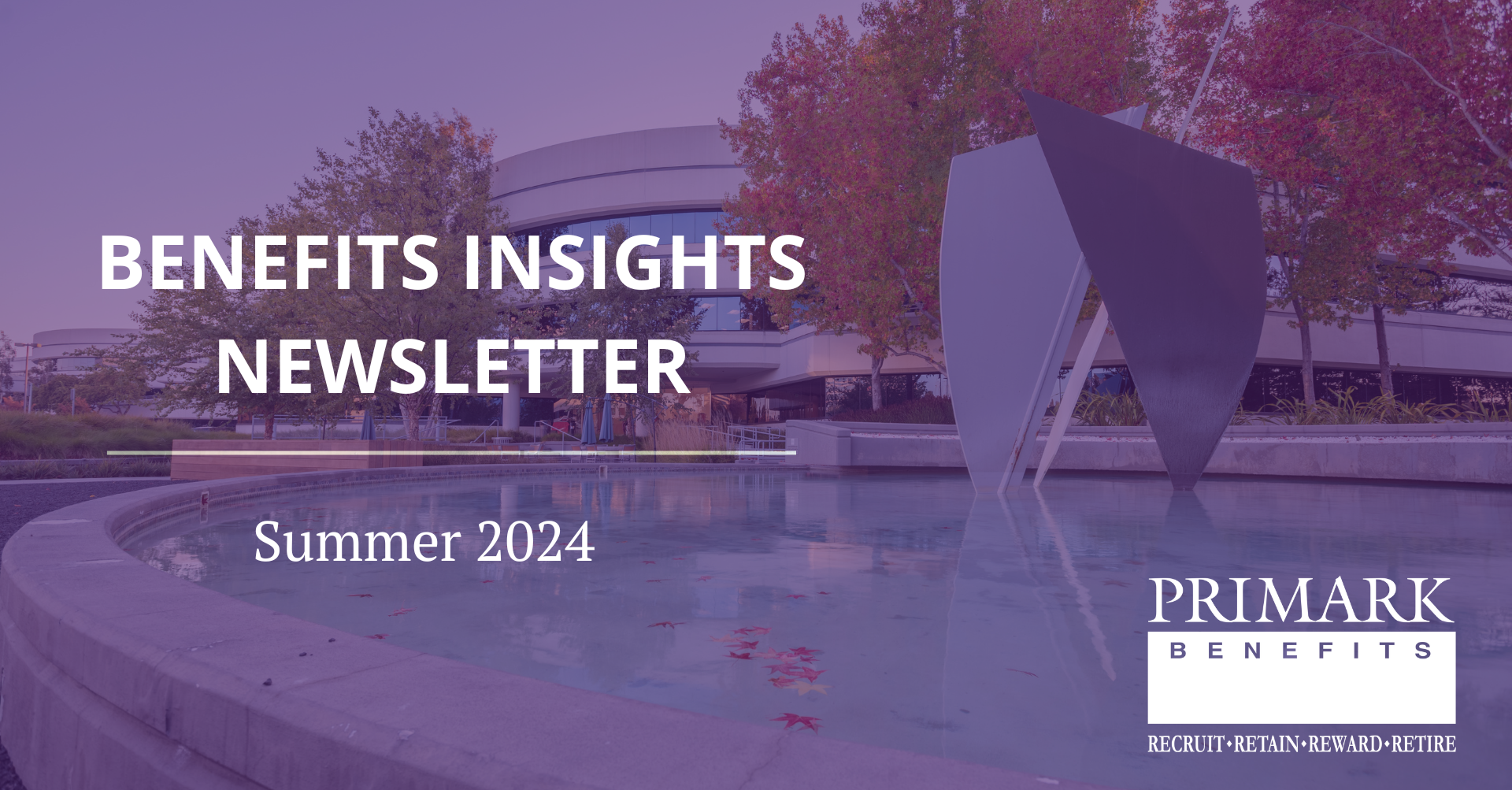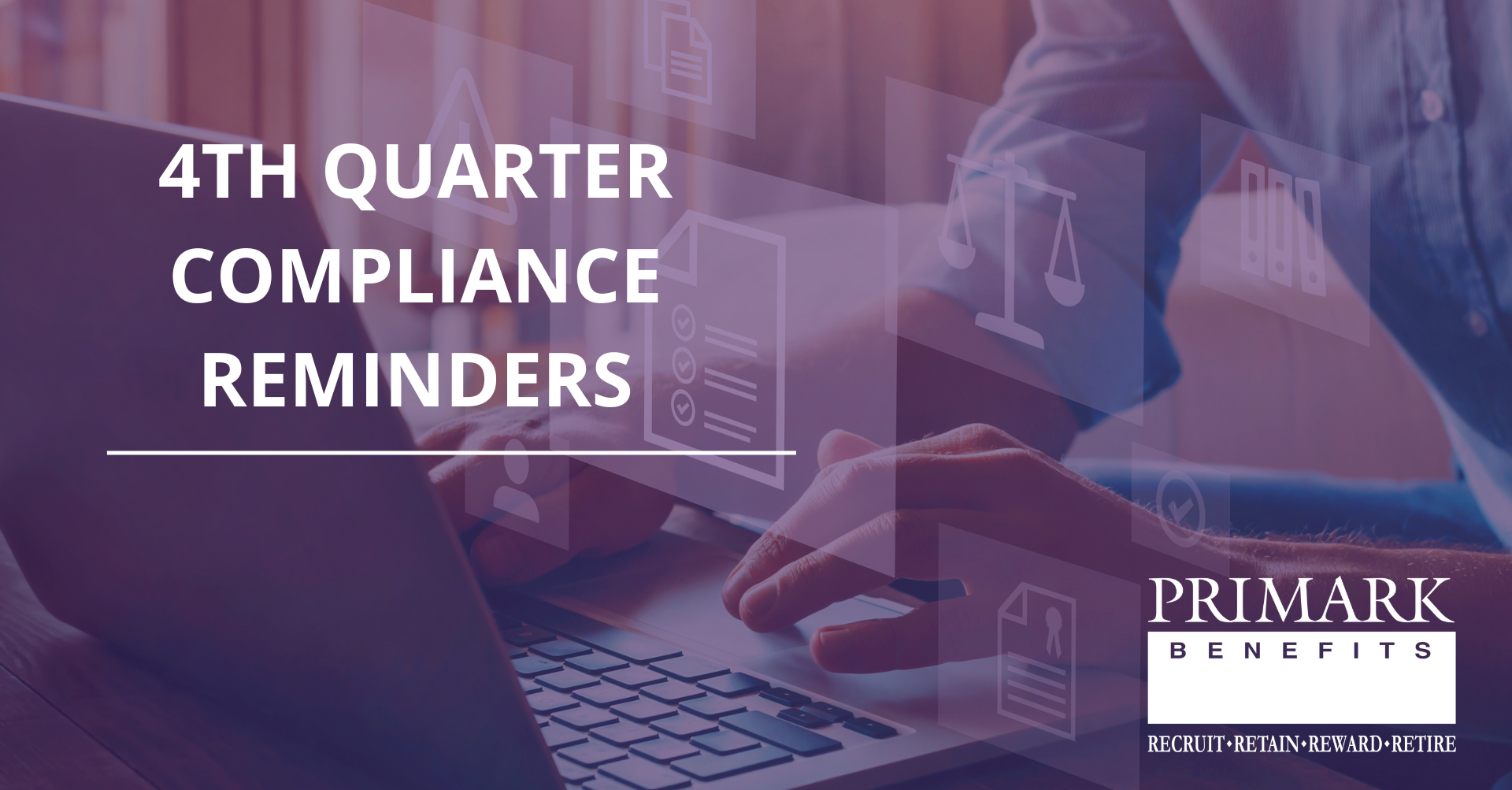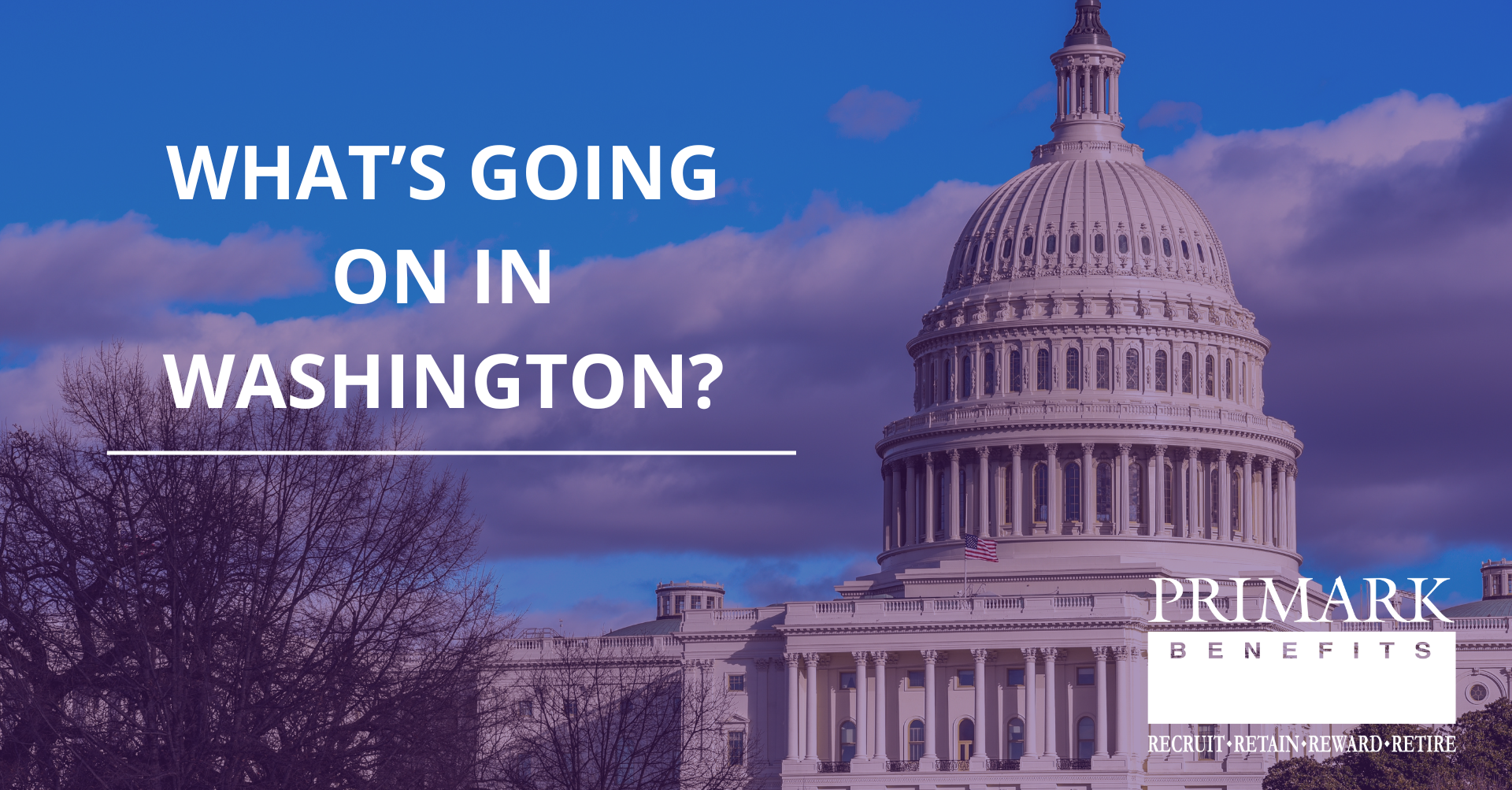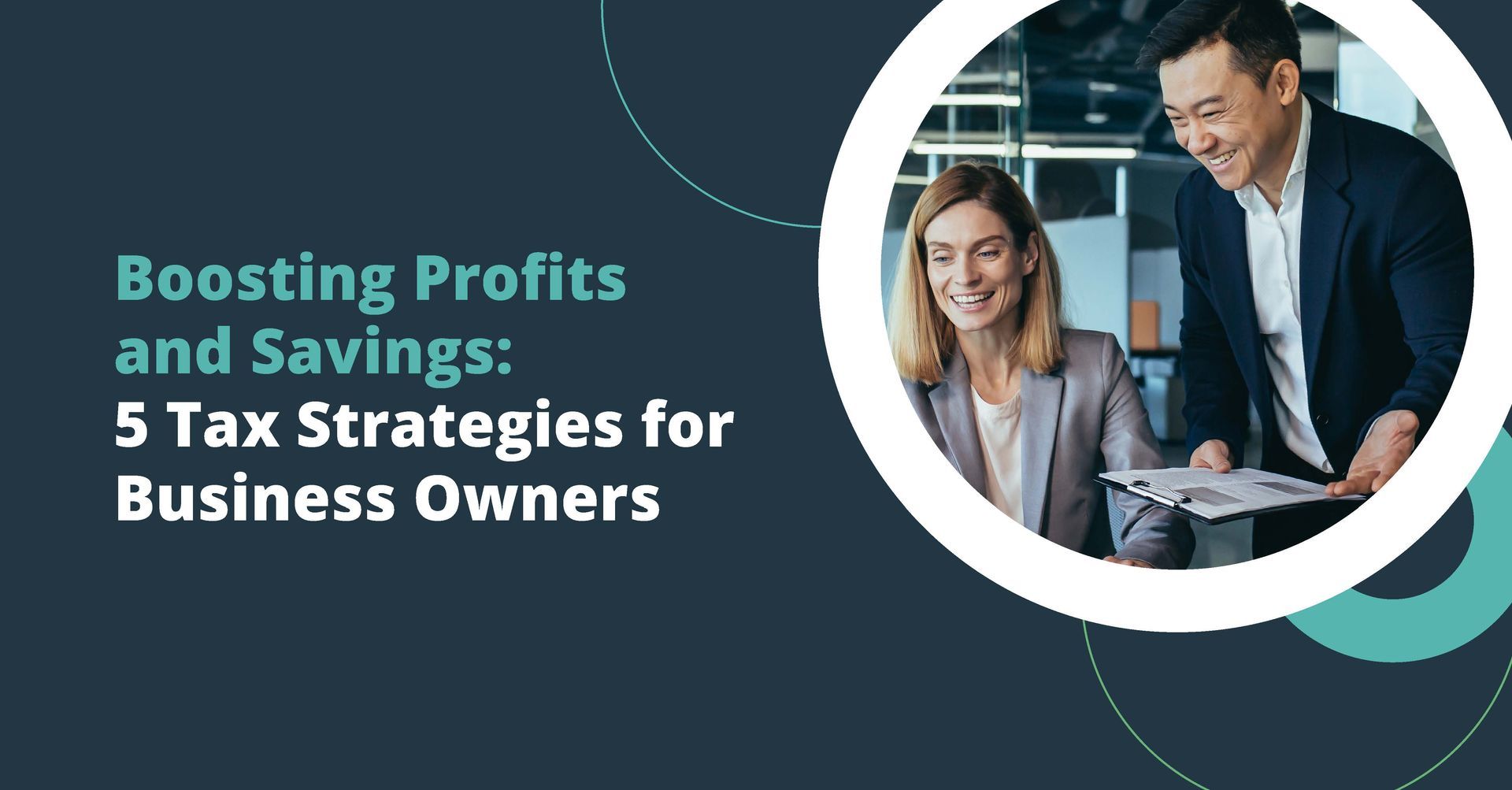BLOG
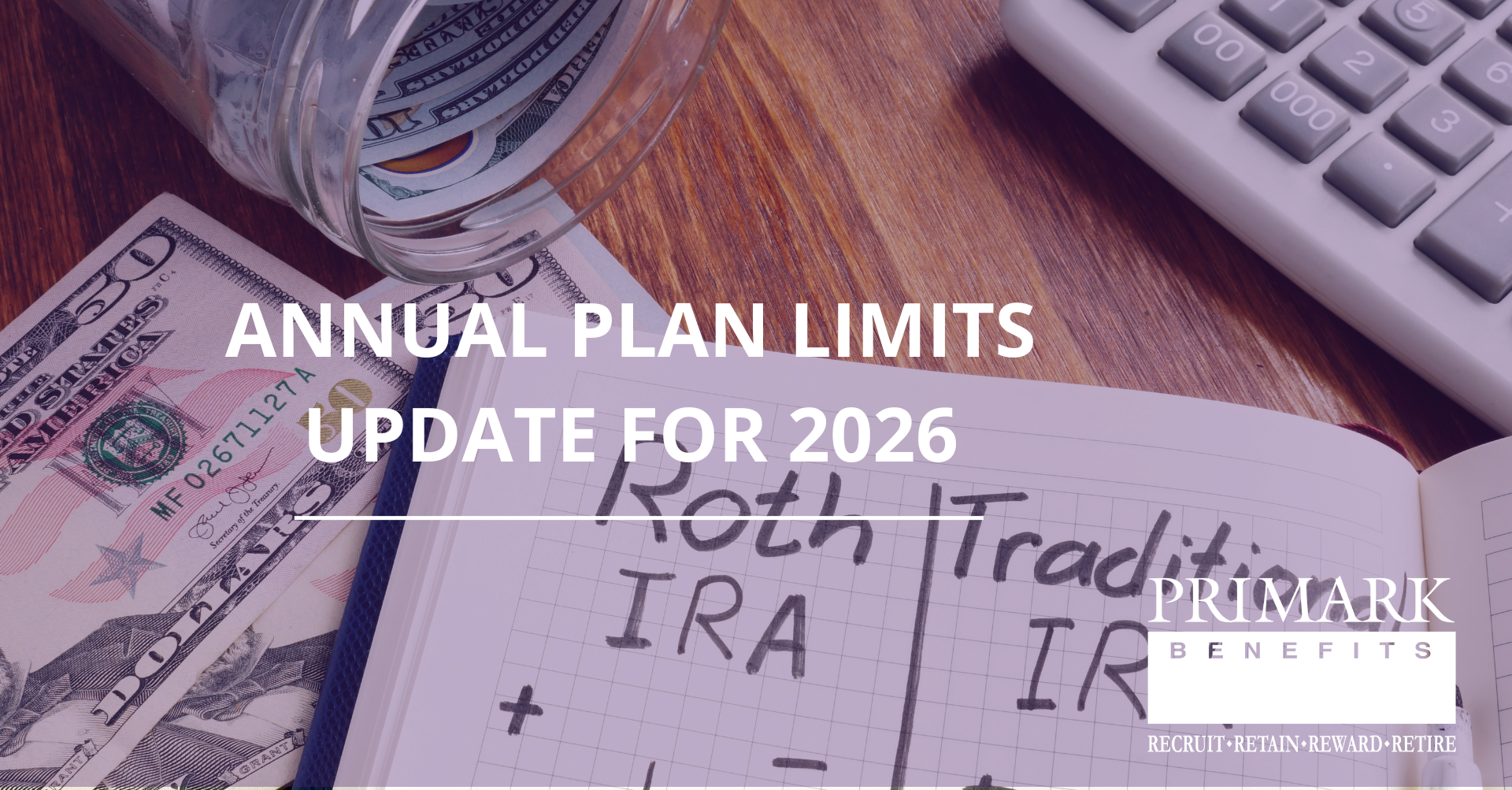
As we approach the end of the year, it’s time for employers, plan sponsors, and participants to review the new retirement plan limits for 2026. Each year, the IRS updates the thresholds for contributions, compensation, and catch-up amounts to account for inflation and statutory changes. Staying on top of these numbers is critical for plan compliance, participant communications, and overall retirement strategy.
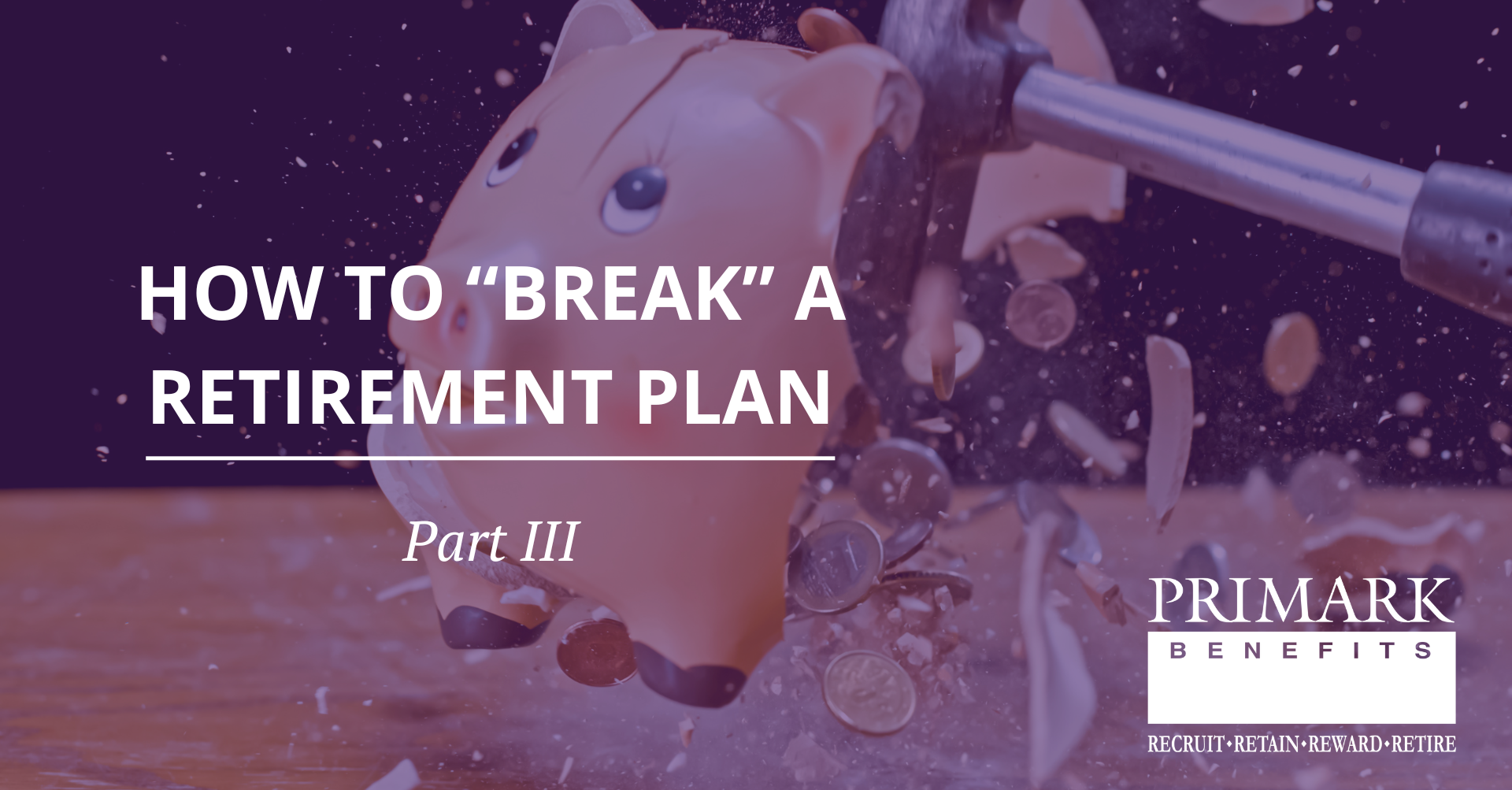
Welcome back to our series, How to “Break” a Retirement Plan” In Part I , we examined structural mistakes—the foundational missteps in plan design, contribution handling, and payroll processes that can quietly set a plan on the wrong path. Part II focused on operational blind spots, showing how day-to-day execution errors, from auto-enrollment missteps to mishandling former employees’ accounts, can derail even a well-designed plan. Now, in Part III, we turn our attention to what happens when the IRS takes a closer look. When a retirement plan is audited, the IRS isn’t searching for obscure loopholes; it’s looking for a familiar set of recurring problems. These are the same types of errors that often start small but can grow into significant compliance issues. Understanding where auditors tend to focus can help plan sponsors stay ahead of “issues” before they become “findings”.
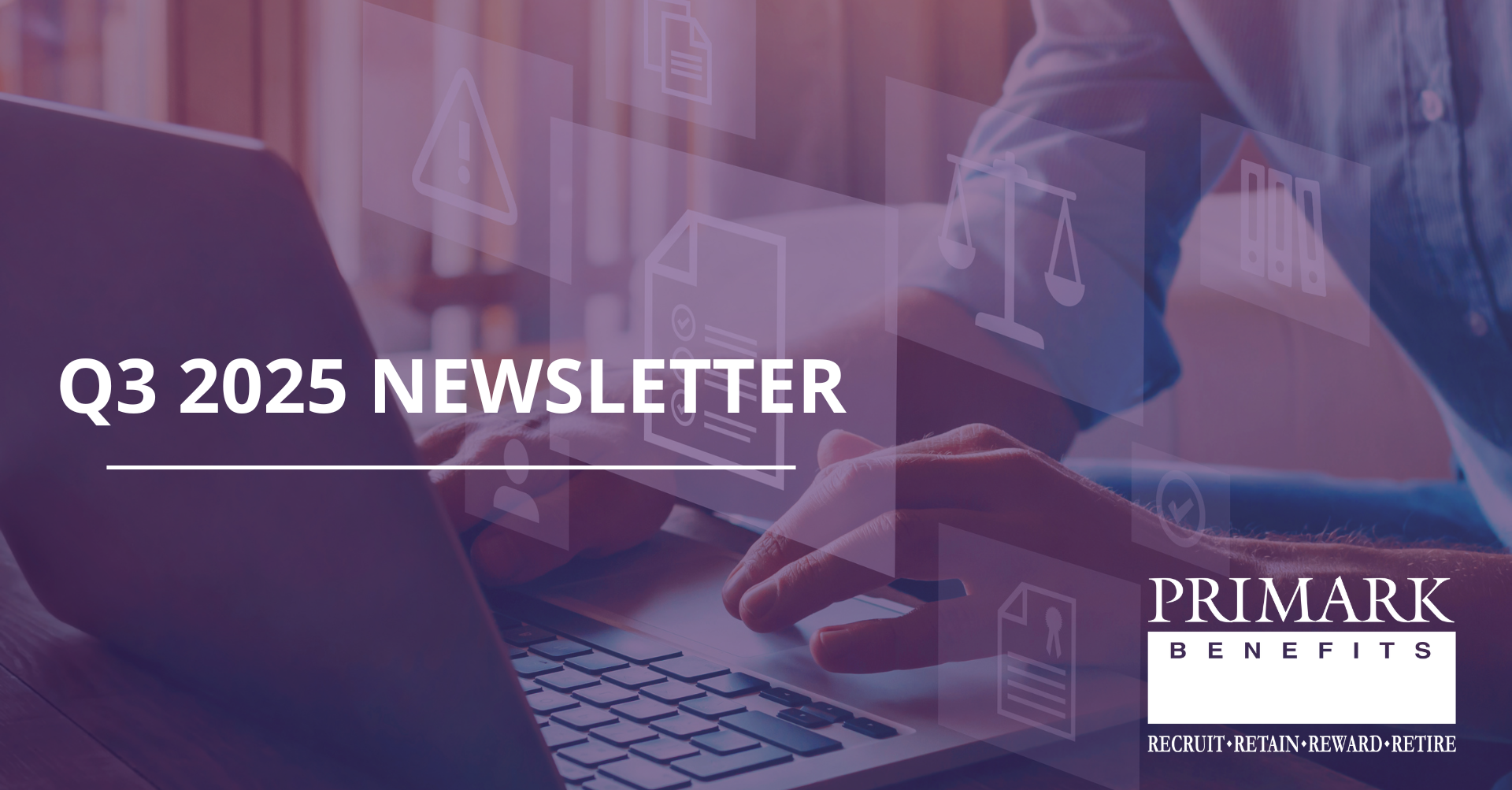
At Primark Benefits, we’re committed to helping employers and advisors navigate the complexities of retirement plans with clarity and confidence. This quarter, we’ve published a range of new articles designed to inform, debunk misconceptions, and highlight opportunities—especially those that can still make a difference for this year. Next quarter, we'll be continuing our new How to "Break" a Retirement Plan Series and discussing other timely and important topics.
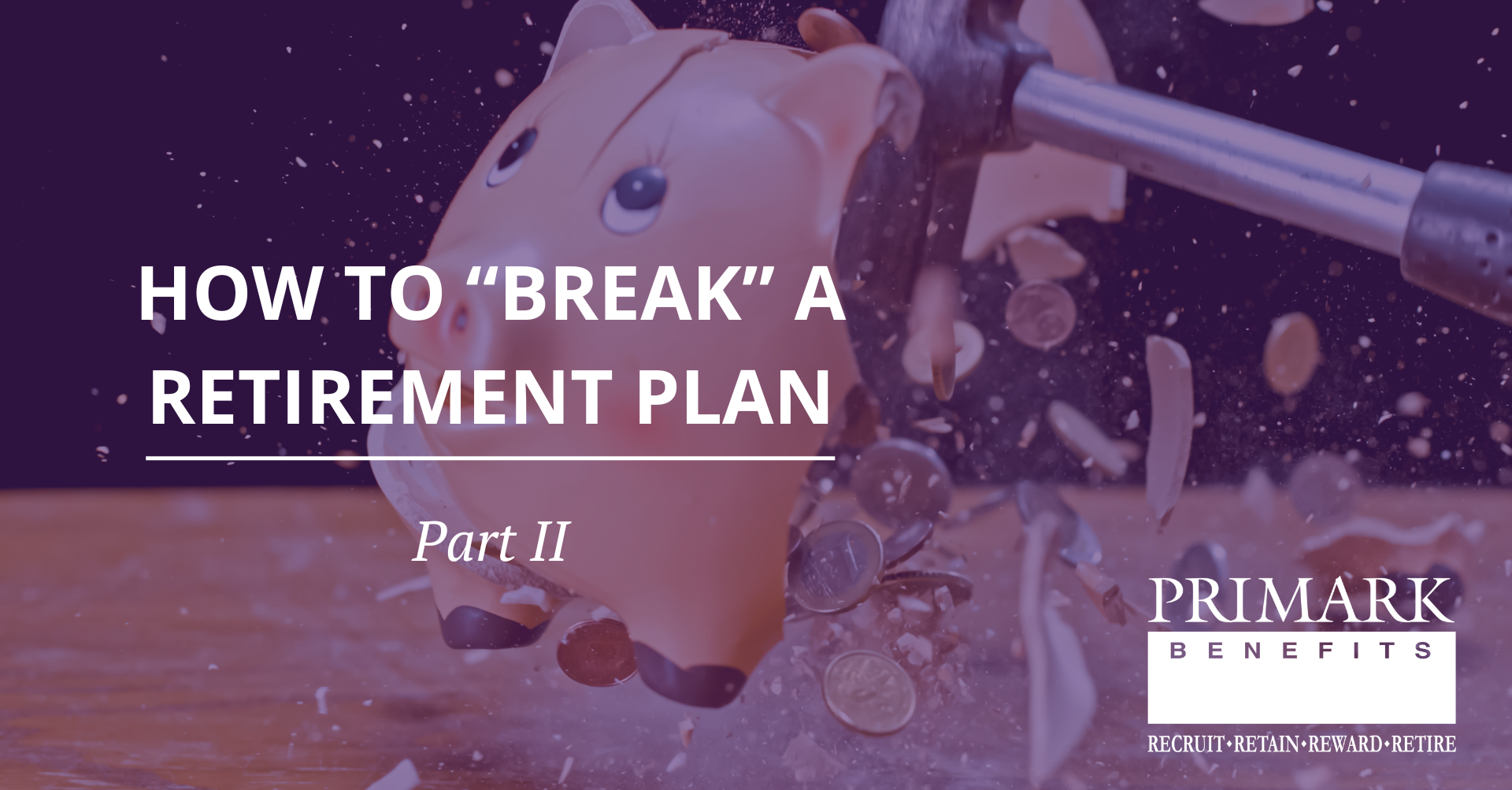
Operational blind spots that often (or can) trip up plan sponsors Welcome back to our series, How to "Break" a Retirement Plan." In Part I , we explored the structural missteps that often set a plan on the wrong path from day one, such as choosing the wrong type of plan, mishandling contributions, and payroll errors. While getting the foundation right is critical, even the strongest plan can unravel if daily operations aren’t tightly managed. The rules are strict, and mistakes (no matter how seemingly small, or well-intentioned!) can trigger costly corrections or even regulatory scrutiny.
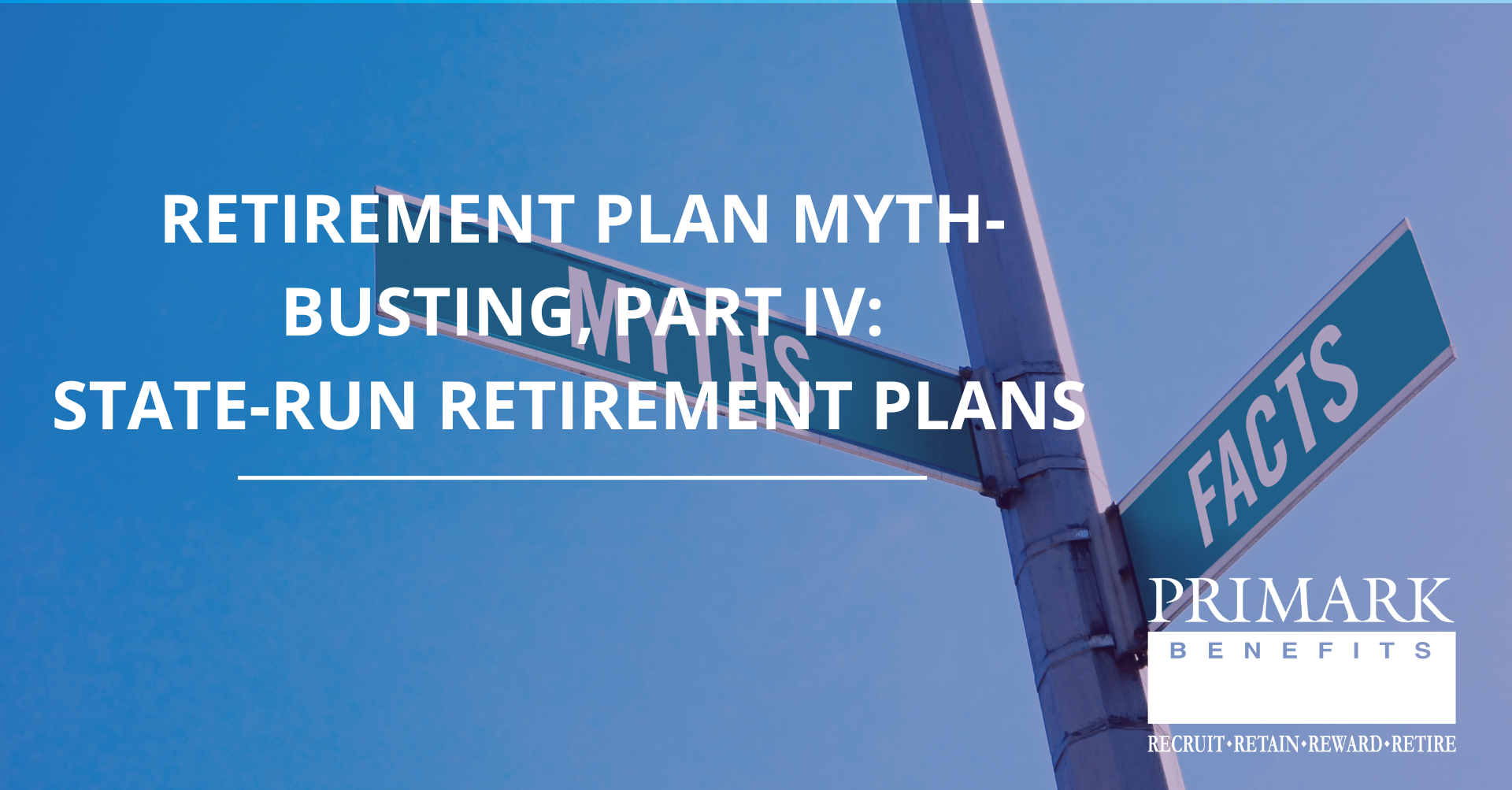
Retirement plans can often feel like an alphabet soup of acronyms, mandates, and evolving state and federal laws. This series seeks to dispel common myths so employers can make better informed decisions. In previous articles, we’ve covered multiple myths at once. However, in Part IV, we’ll focus our efforts on one big misconception. Specifically, we’ll be talking about the idea that cookie-cutter, state-run programs such as CalSavers are “just as good” as custom-designed retirement plans, and the misunderstandings that persist about what state-run retirement programs do (and don’t) offer.
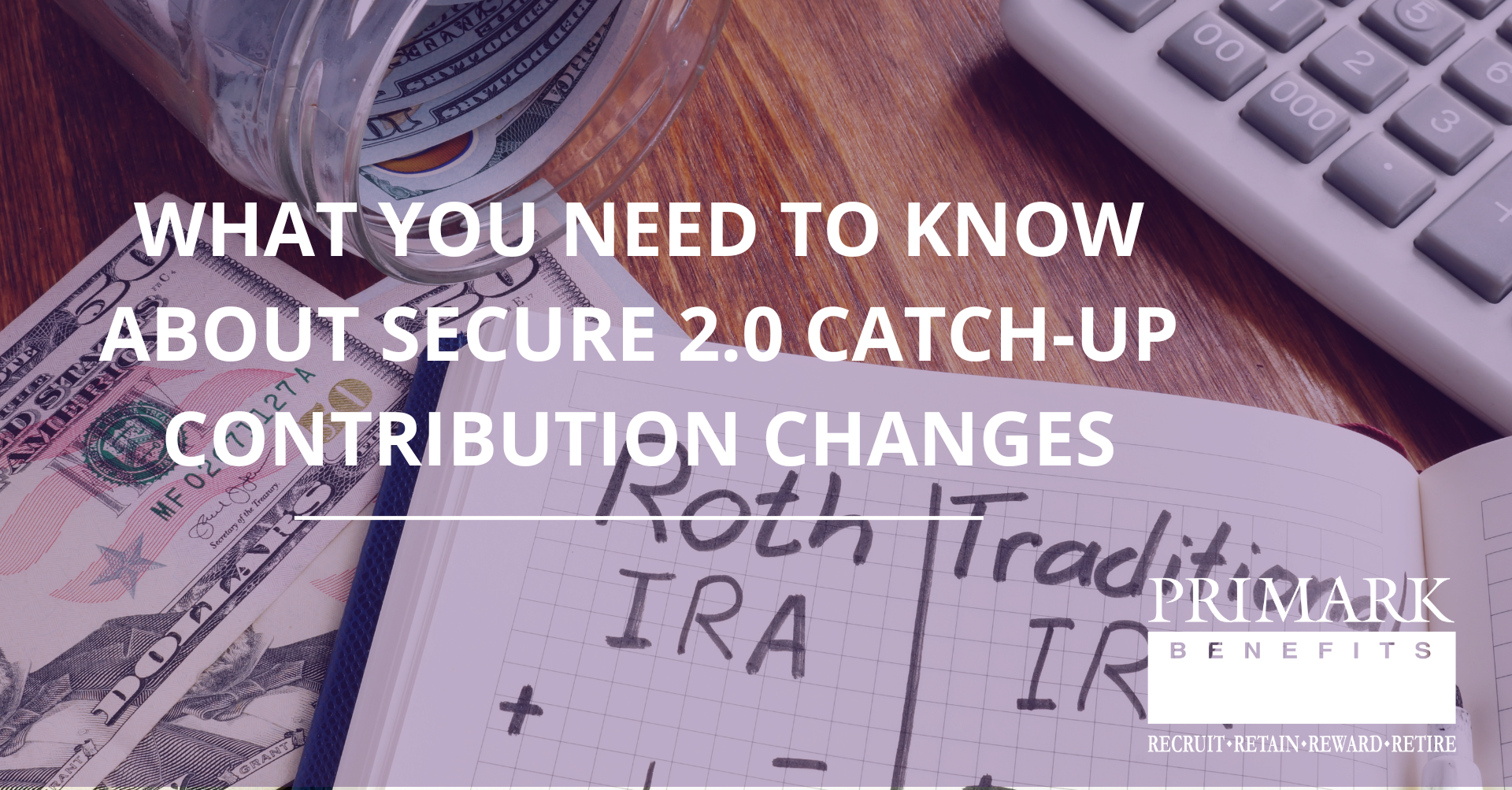
Retirement plan catch-up contributions allow “older” workers—typically those age 50 and over— to set aside additional funds in their retirement accounts beyond standard annual limits. These extra contributions are an important planning tool for those nearing retirement who want to make up for earlier gaps in saving.
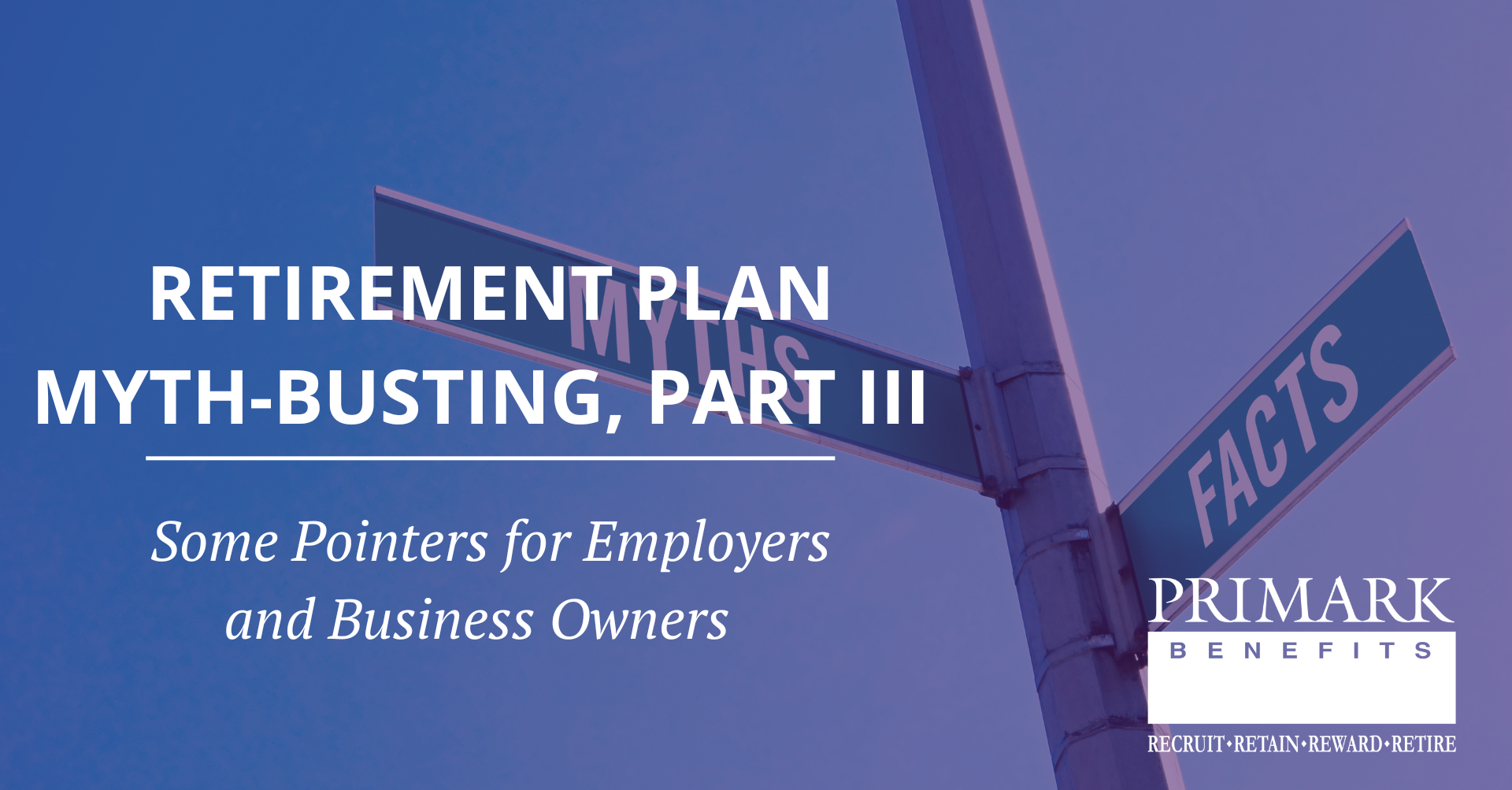
Retirement plans can be confusing. Between complex rules, industry jargon, and competing providers, it’s easy for employers to fall into patterns based on assumptions or half-truths. That’s why we created this series: to cut through the noise and help employers make confident, informed decisions. In this third installment, we’re addressing two persistent myths that often lead employers down the wrong path: the idea that payroll providers are the best place to get your plan, and the belief that robo-firms offer a hassle-free alternative. Spoiler: neither is as simple (nor as beneficial) as they seem.
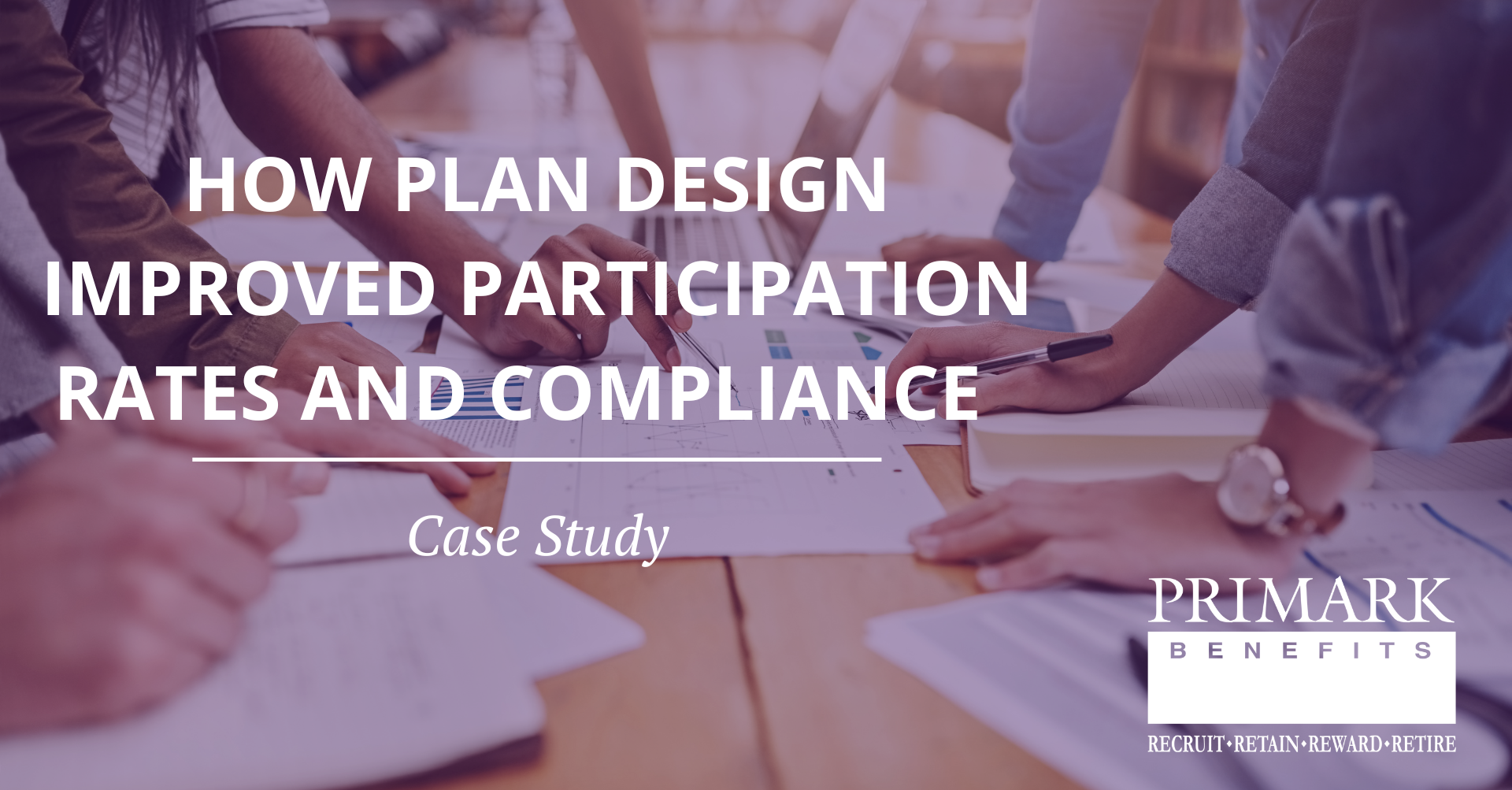
Many companies, especially in the professional services sector—law firms, staffing agencies, engineering and consulting companies, healthcare groups, etc.—are often made up of various employee tiers. For example, in a given company, you might find partners or executives in one segment, professional staff in another, and support staff or hourly workers in yet another. While this tiered structure works well operationally, it can pose challenges relating to retirement plan compliance. In one recent example, the Primark Benefits team helped a client with over 3,500 employees overcome a complicated compliance issue by strategically changing the plan design, first expanding eligibility and then implementing automatic enrollment. Let’s take a look.
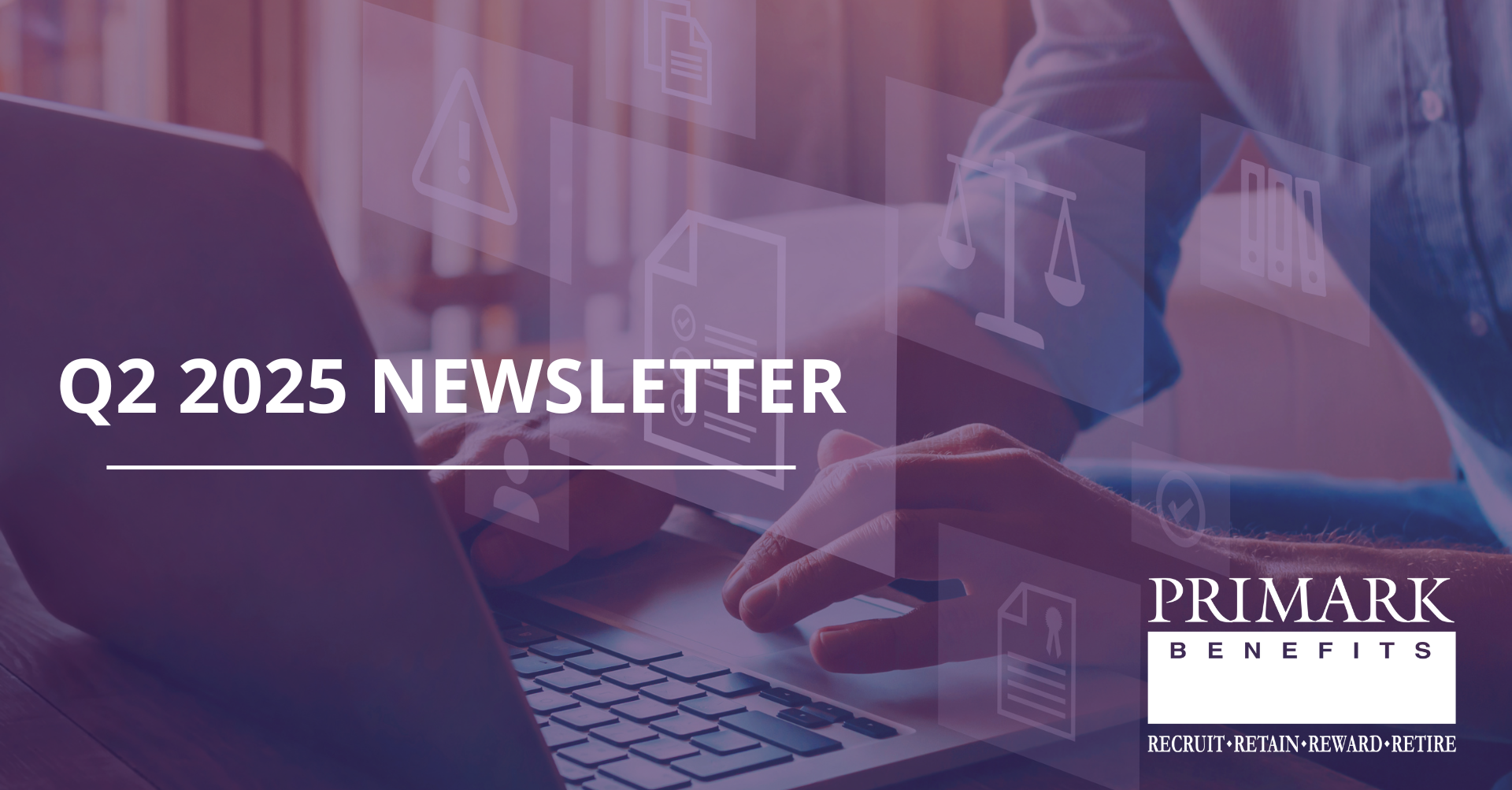
At Primark Benefits, we’re committed to helping employers and advisors navigate the complexities of retirement plans with clarity and confidence. This quarter, we’ve published a range of new articles designed to inform, debunk misconceptions, and highlight opportunities—especially those that can still make a difference for 2024. Next quarter, we'll be continuing our "Retirement Plan Myths Busting" Series and featuring a new case study showing how smart plan design solved a tricky compliance issue.
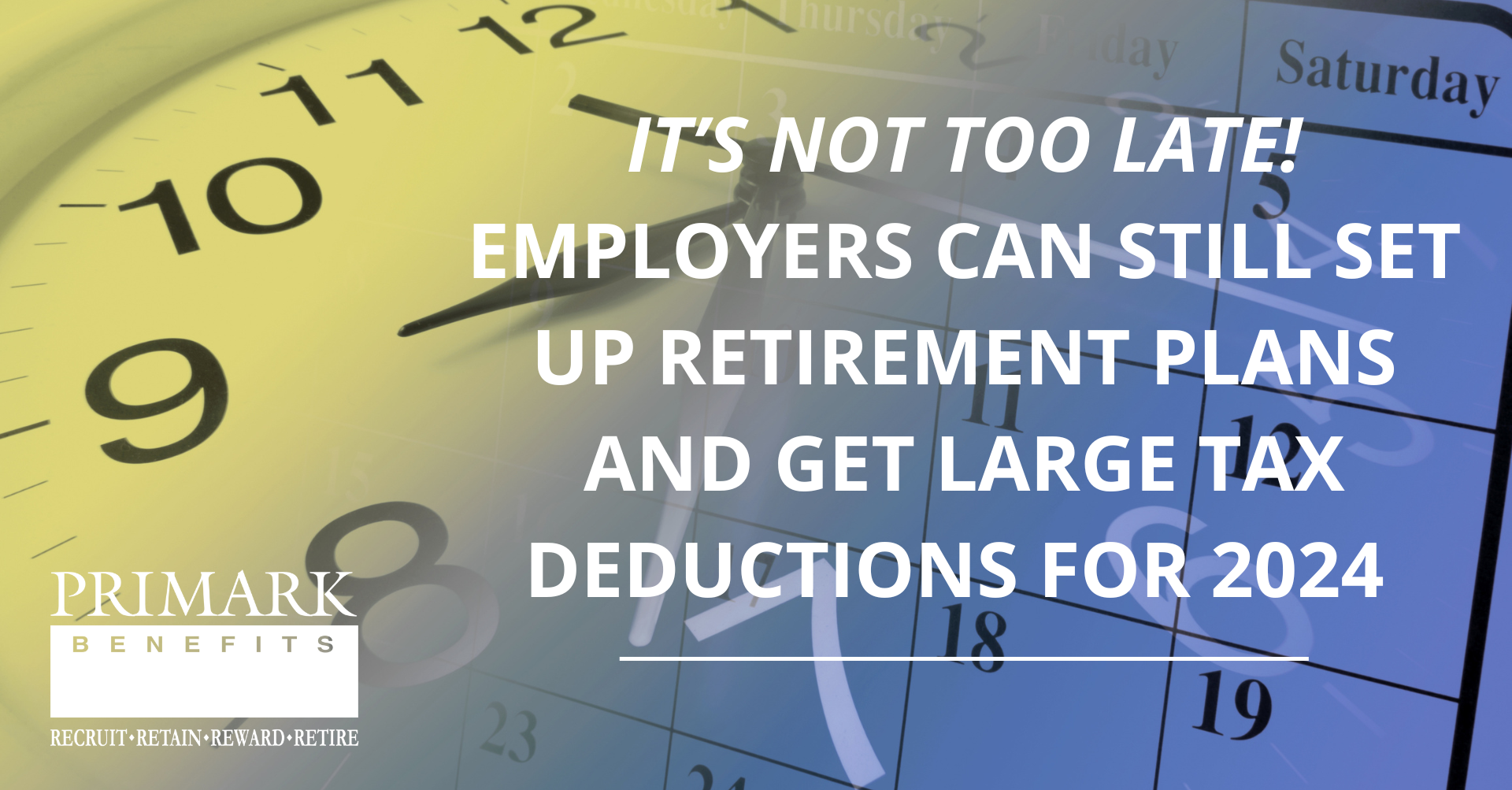
It’s Not Too Late! Employers Can Still Set Up Retirement Plans and Get Large Tax Deductions for 2024
Recent changes in tax law have expanded the flexibility employers have when it comes to establishing and funding retirement plans. If you haven’t yet set up a retirement plan for 2024, we have good news: it might not be too late!
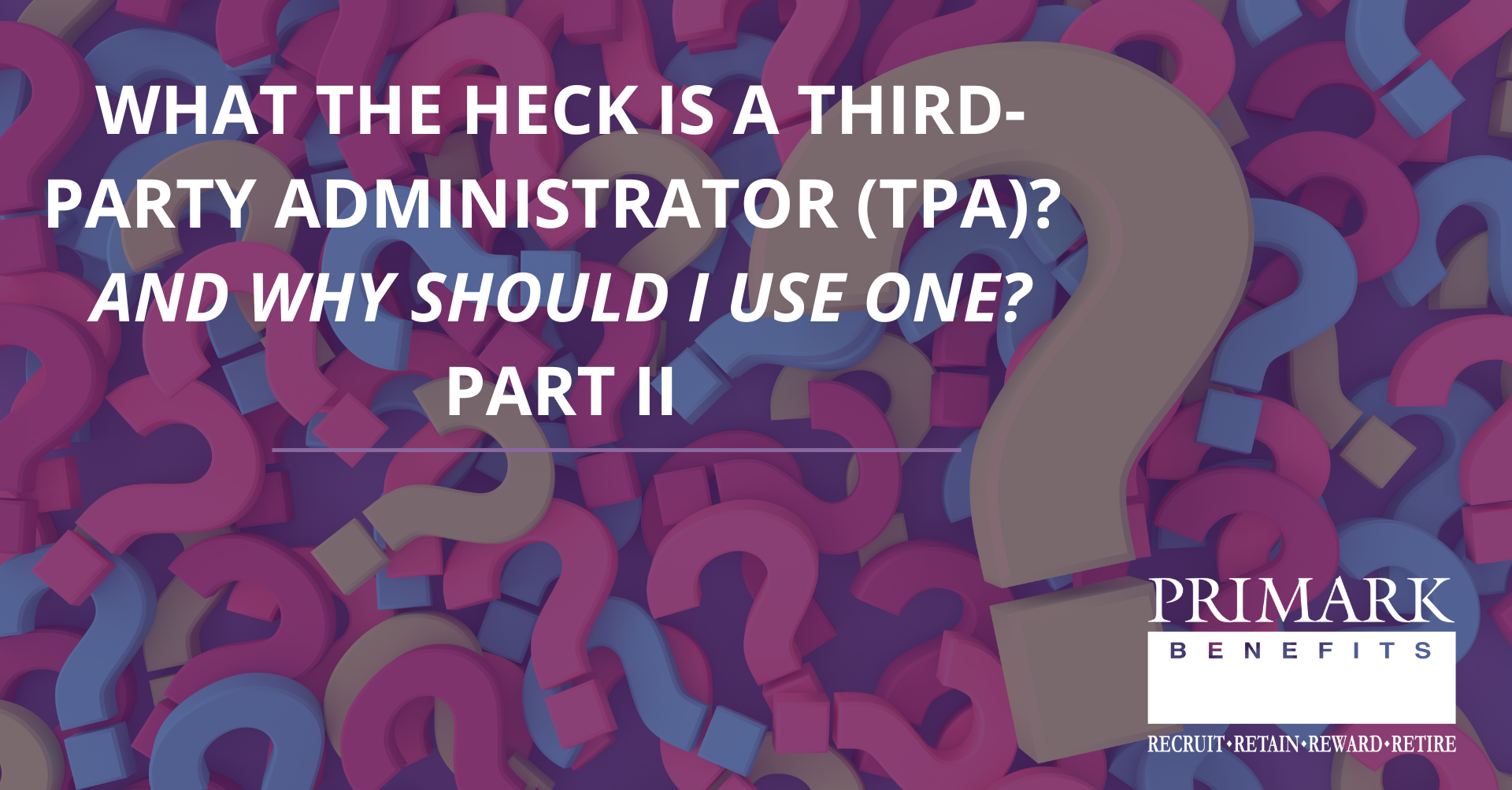
When most people think about retirement plans and pensions, what comes to mind are the big-name players: government systems, large corporations, and the financial institutions that support them such as banks, brokers, and investment firms. These organizations tend to be the visible “faces” of retirement savings, managing assets, issuing account statements, and promoting their expertise through marketing and media. But behind the scenes, there’s another essential player who often goes unnoticed: the Third-Party Administrator, or TPA. In a previous post, we explored how TPAs have emerged to meet vital client needs that large investment firms often overlook, such as tailored plan design, compliance, and personalized service. If you missed that article, click here to read it before diving into today’s topics: The risks of relying solely on asset-driven providers, and why personalized plan administration still matters.
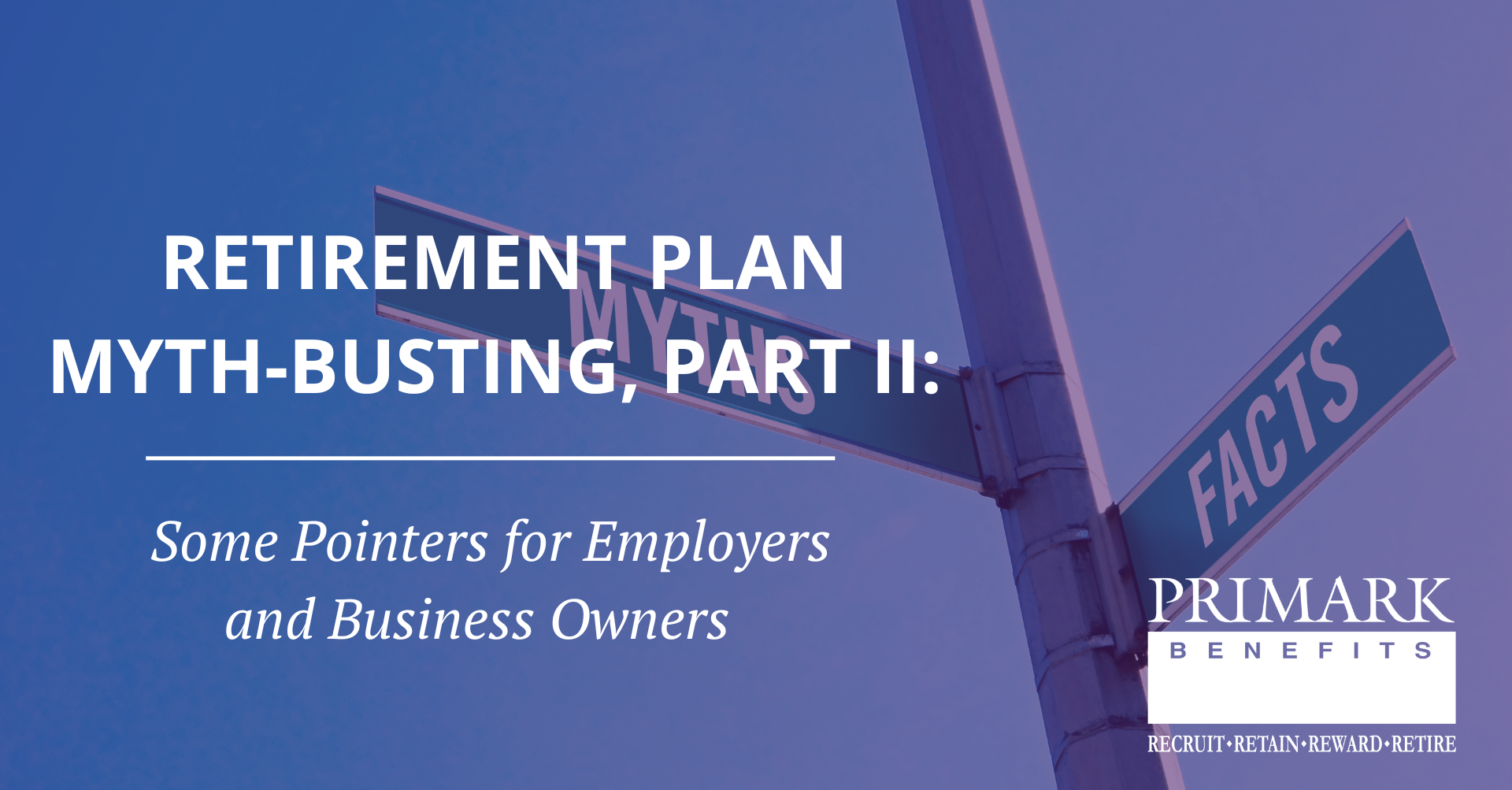
Navigating the numerous retirement plans offered in the marketplace can be confusing, even before considering the many myths surrounding the topic. In our work with clients, we hear about these misconceptions that often steer employers in the wrong direction. In this second installment of an ongoing “myth-buster” blog series, we address three more of the most common retirement plan myths that we hear. For our first installment, click here .
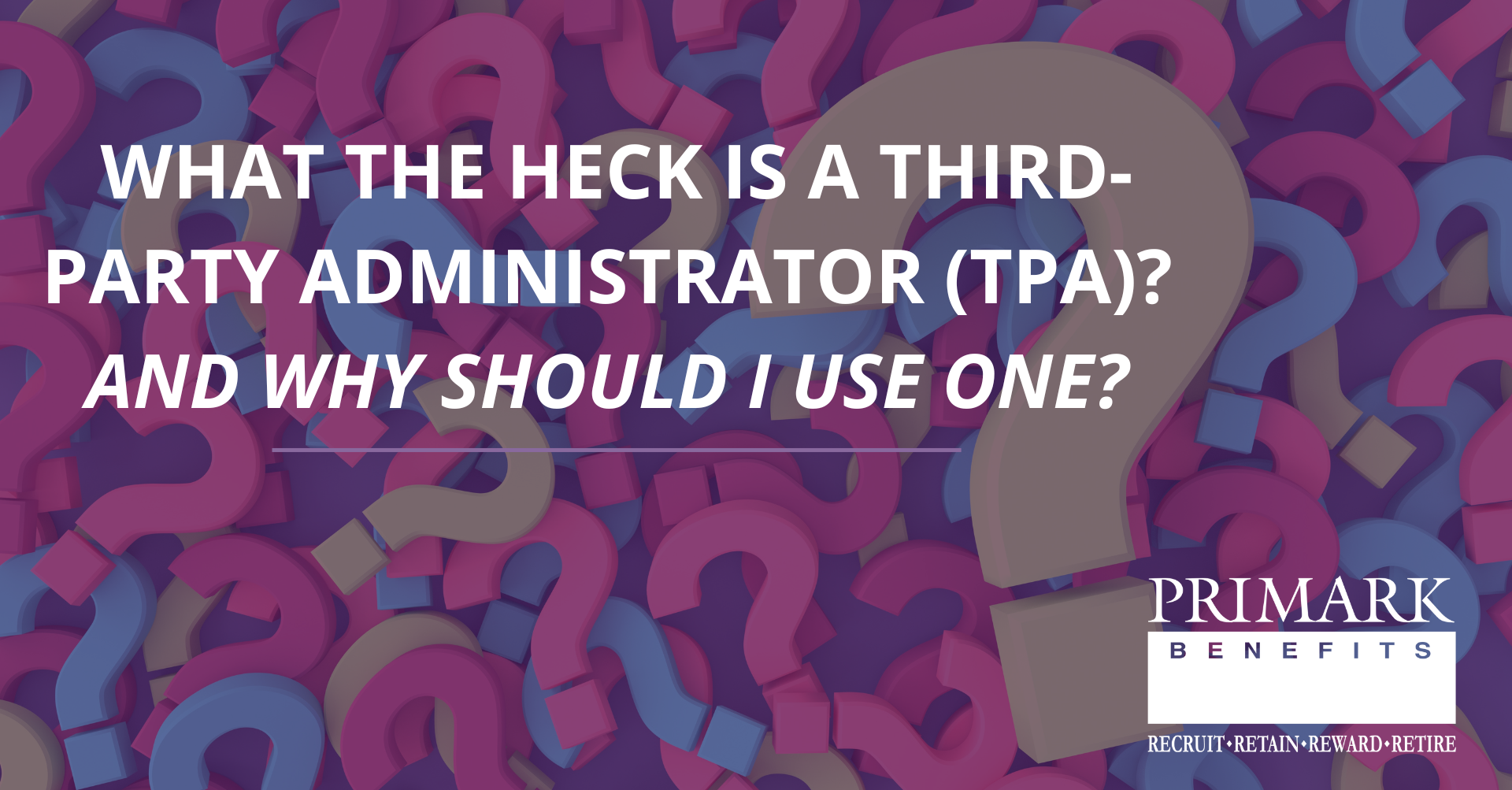
Part I: A Brief History of TPAs When discussing retirement plans and pensions, many people immediately think of public sector entities and large corporations and the financial institutions that support them, such as banks, brokers, and investment firms. These entities tend to appear as the visible “faces” of retirement savings: managing assets, issuing account statements, even airing commercials touting their investment expertise. But what many folks don’t realize is that there's another key player behind the scenes: an entity called a Third-Party Administrator, or TPA. In today’s post, we explore the history of the Third-Party Administrator, beginning with the rise of retirement plans in the U.S.
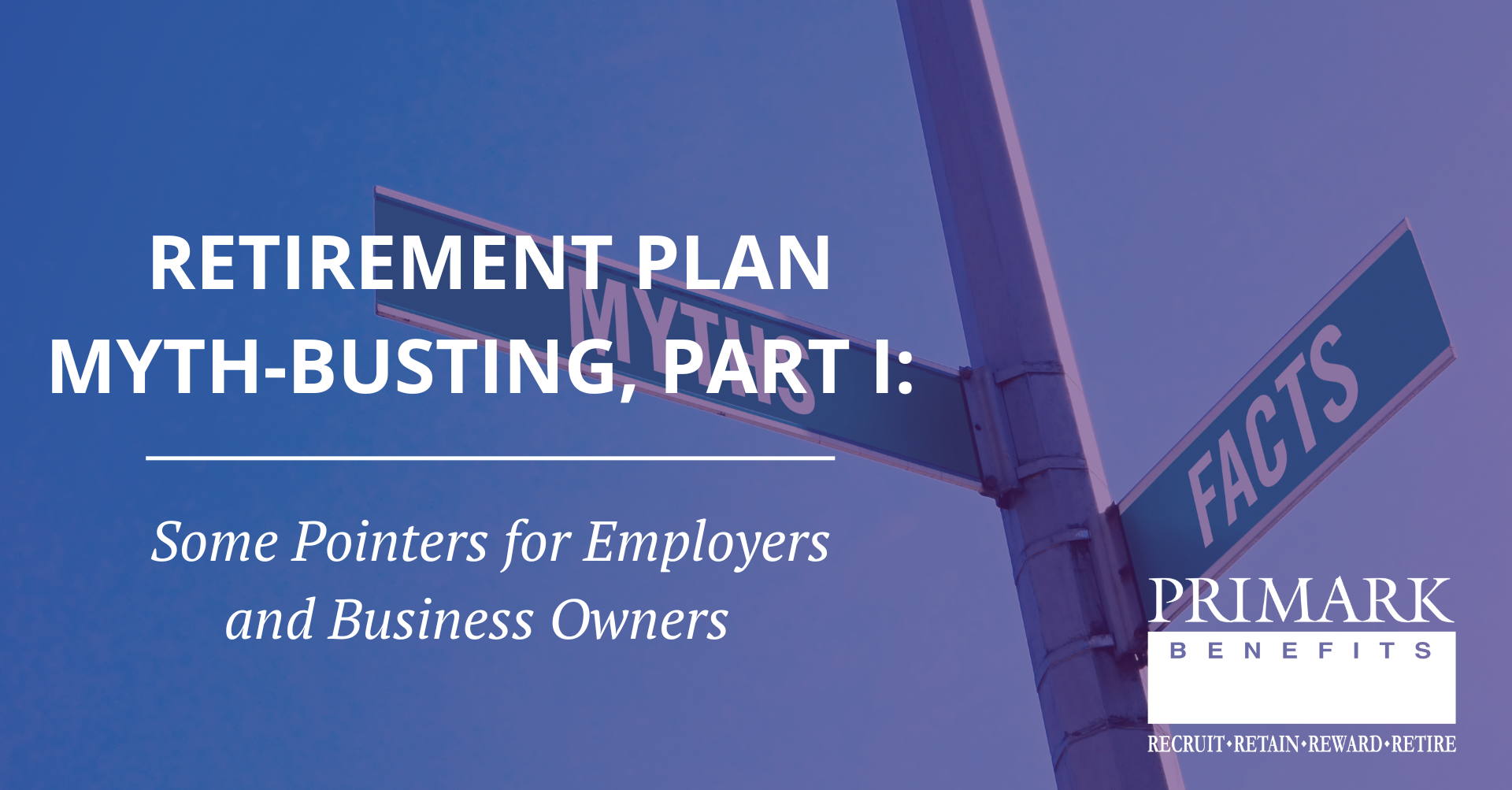
Navigating the numerous retirement plans offered in the marketplace can be confusing, even before considering the many myths surrounding the topic. In our work with clients, we hear about these misconceptions that often steer employers in the wrong direction. In this first installment of an ongoing “myth-buster” blog series, we address three of the most common retirement plan myths that we hear.
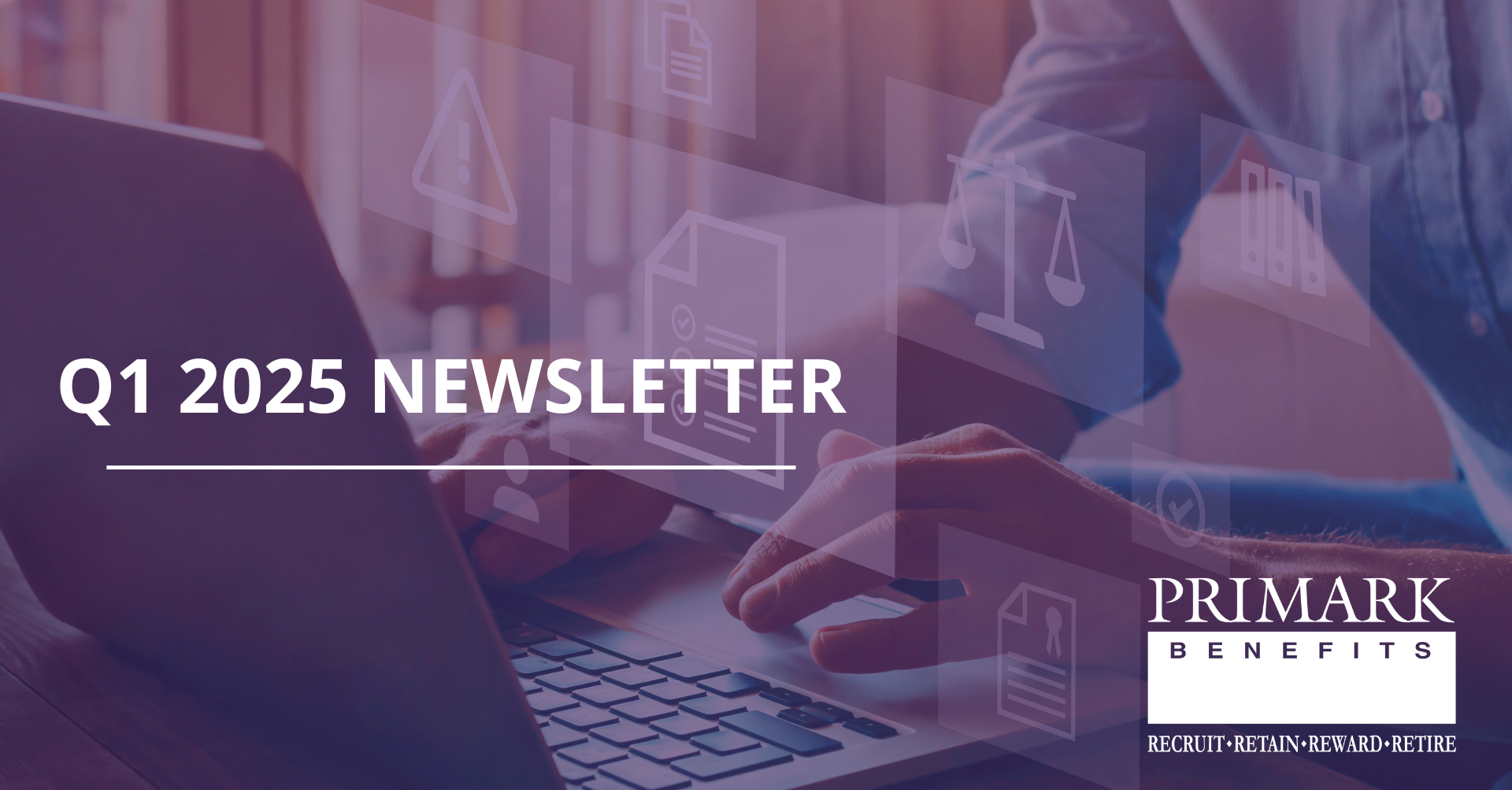
As we wrap up the first quarter of 2025, the team at Primark Benefits has been hard at work for our clients, keeping their retirement plans in compliance. At the same time, we've also been keeping you informed on the latest retirement plan developments, compliance updates, and strategic best practices. In case you missed any of our recent articles, here’s a quick recap of the topics we covered this quarter—from new SECURE 2.0 provisions to record retention strategies and ROTH account considerations.
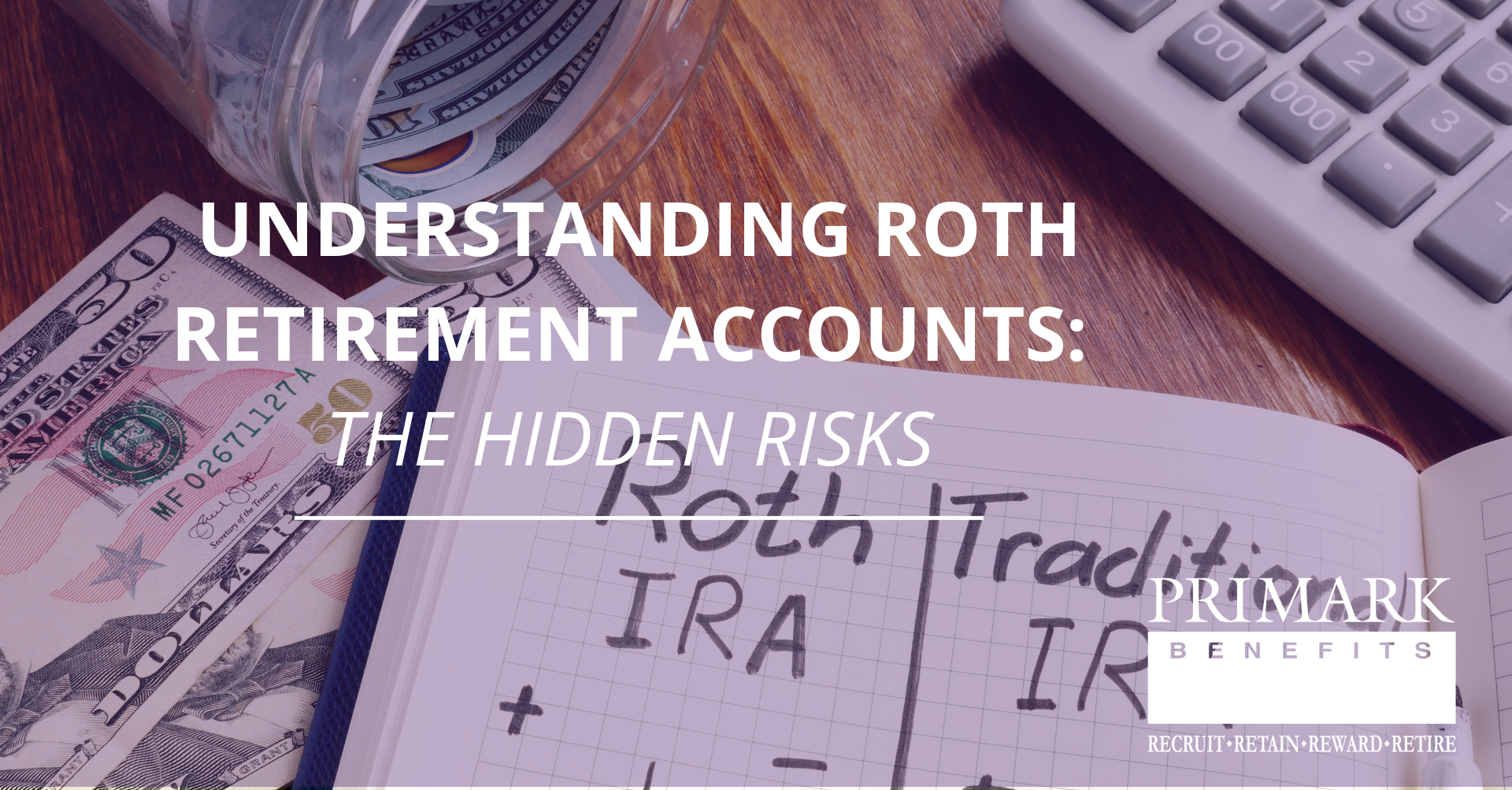
The ROTH Retirement Account, named for Senator William Roth, was introduced as part of the Taxpayer Relief Act of 1997. The main feature of a ROTH account is that contributions are made with post-tax dollars as opposed to pre-tax; this means that any withdrawals, including earnings on the investments, are tax-free in retirement. This advantage can be particularly attractive for those individuals who anticipate being in a higher tax bracket later in life. However, this needs to be weighed against the uncertainty about whether and for how long this tax status will be truly protected. Can you safely invest in a ROTH account and really expect tax-free withdrawals ten, twenty, or thirty years down the line?
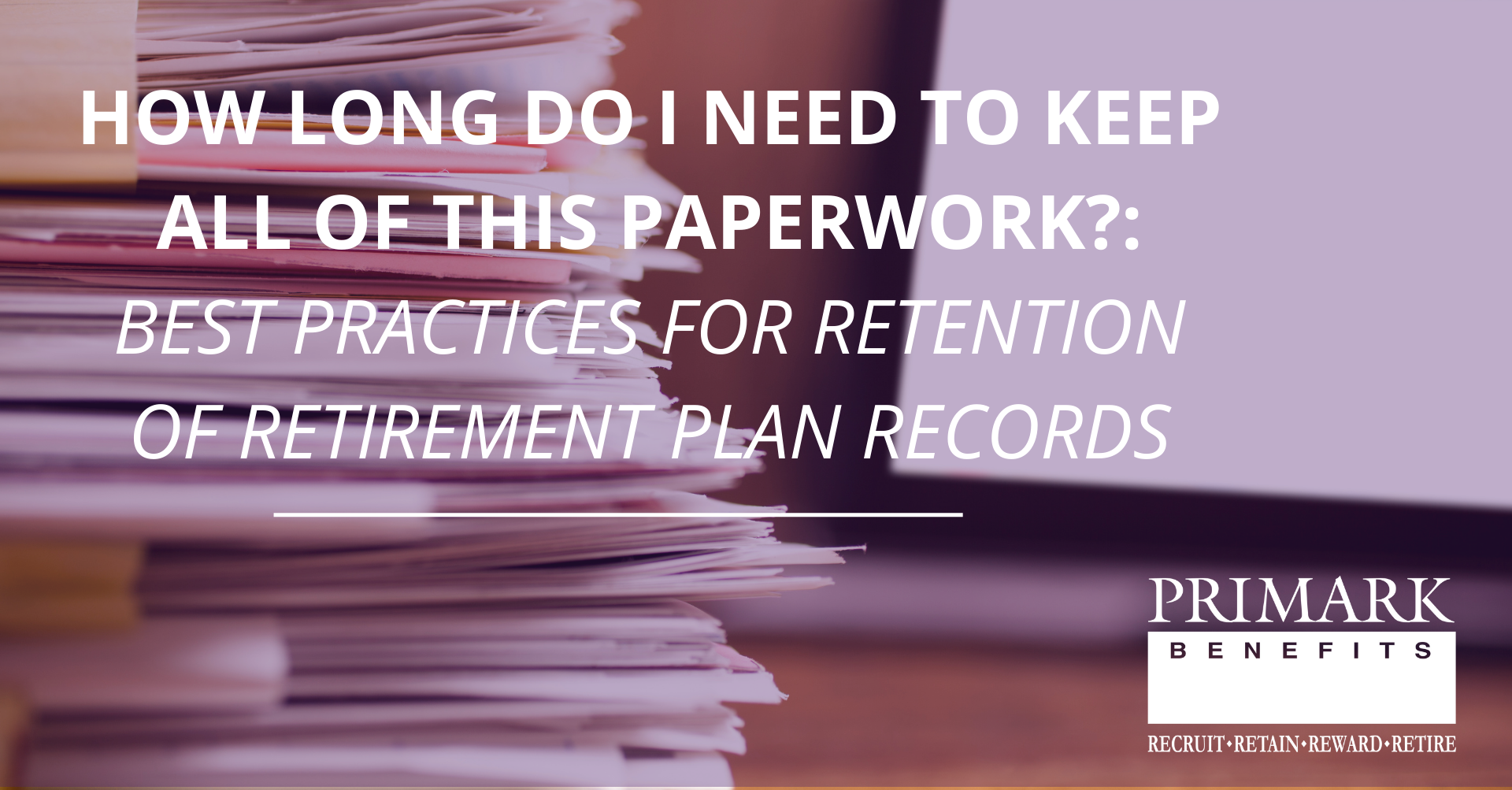
How Long Do I Need to Keep All of This Paperwork? Today, we’re going to share our position on what may seem to be a black-and-white (if not also mundane) retirement plan-related topic - that of record retention. It’s one that we’ve been asked about hundreds of times, and understandably so: For one thing, it involves a lot of files, whether hard copy or electronic. Also, the requirements and guidelines from various government agencies can often seem to conflict. Most importantly, though, it has gotten plenty of well-meaning plan sponsors into some hot water, both financially and legally. There have been numerous instances when it turned out the guidelines weren’t enough to protect employers from costly legal disputes. Read on to find out more.
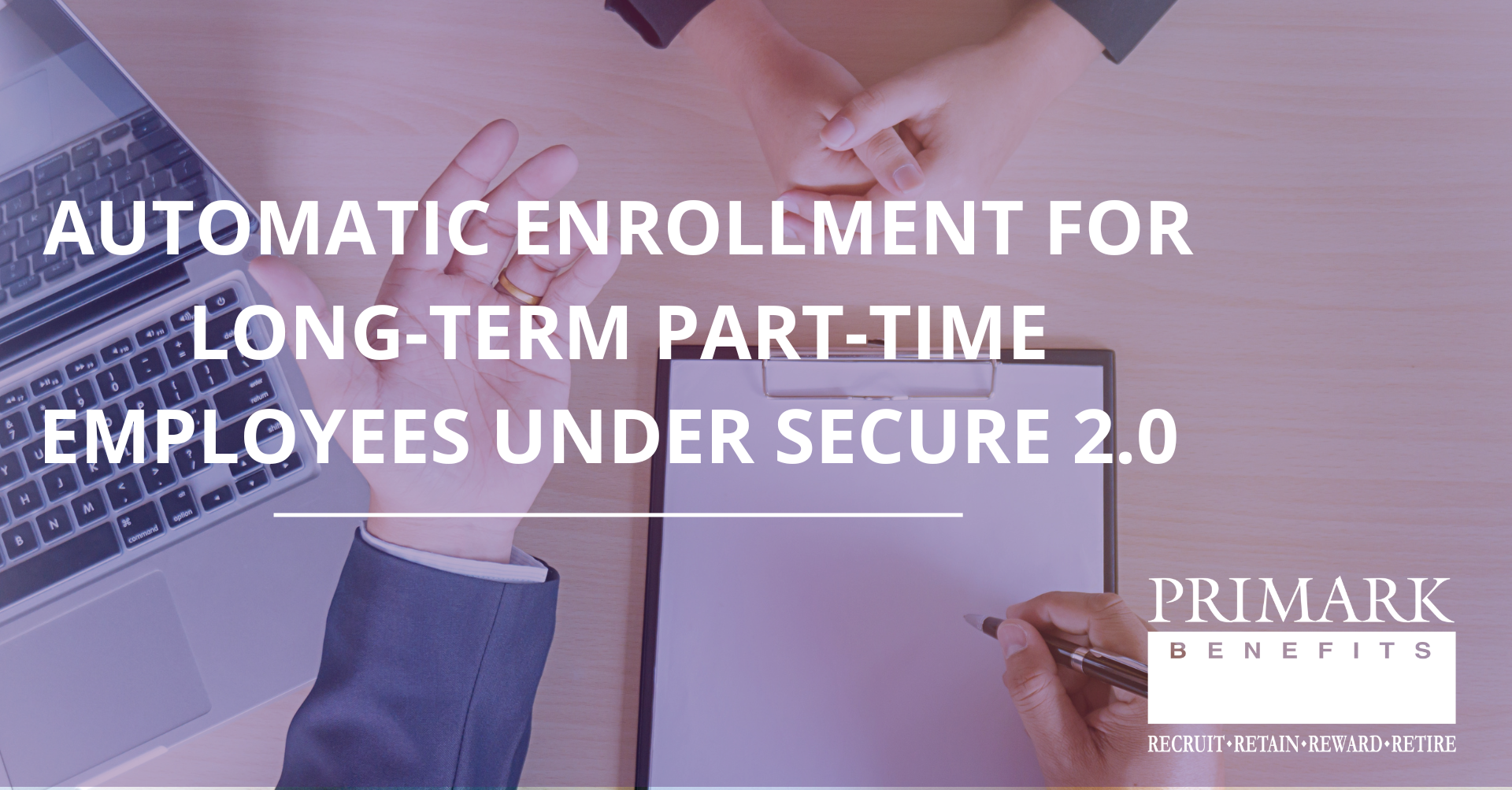
For most Americans, the primary source of retirement savings comes through workplace plans. Despite perceptions that others may save through brokerage accounts or insurance policies, statistics show workplace plans are the cornerstone of retirement security. Individuals are 15 times more likely to open and fund a 401(k) at work than to set up an IRA independently, with over 56% of American workers participating in a workplace retirement plan.[1] These plans provide a clear path toward financial stability in retirement and reduce reliance on Social Security alone.
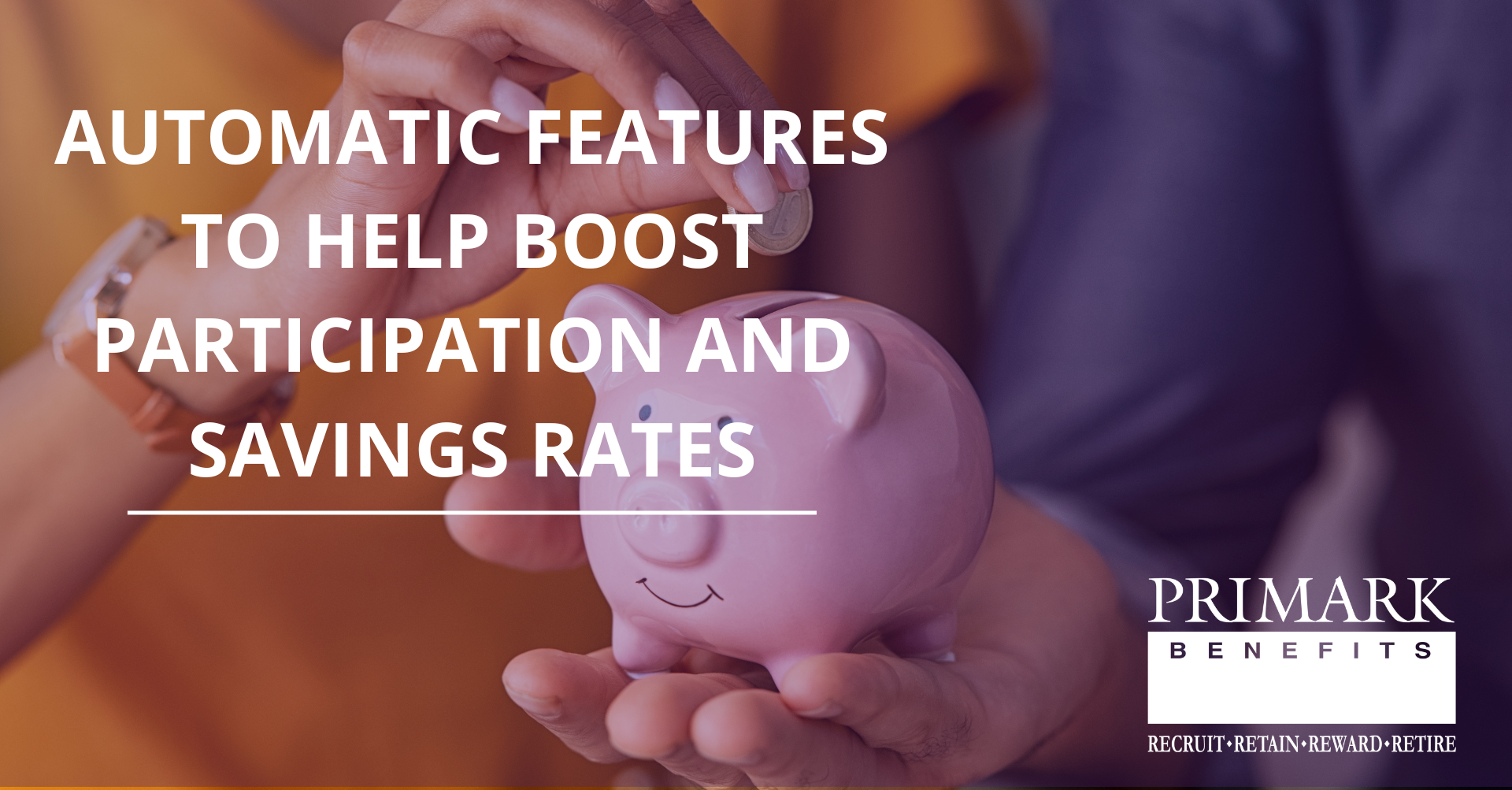
The use of automatic features in 401(k) plans has continued to climb in popularity over the past decade. In fact, auto features such as automatic enrollment and auto escalation are considered best practices in 401(k) plan design as ways to help boost participation and employee savings rates.[1] Many large 401(k) retirement plans offer auto features. However, small business plan sponsors have been slower to adopt them as part of their 401(k) plan design. If your company’s retirement plan design doesn’t currently include auto features, and/or if you’re thinking about implementing them, then keep reading.
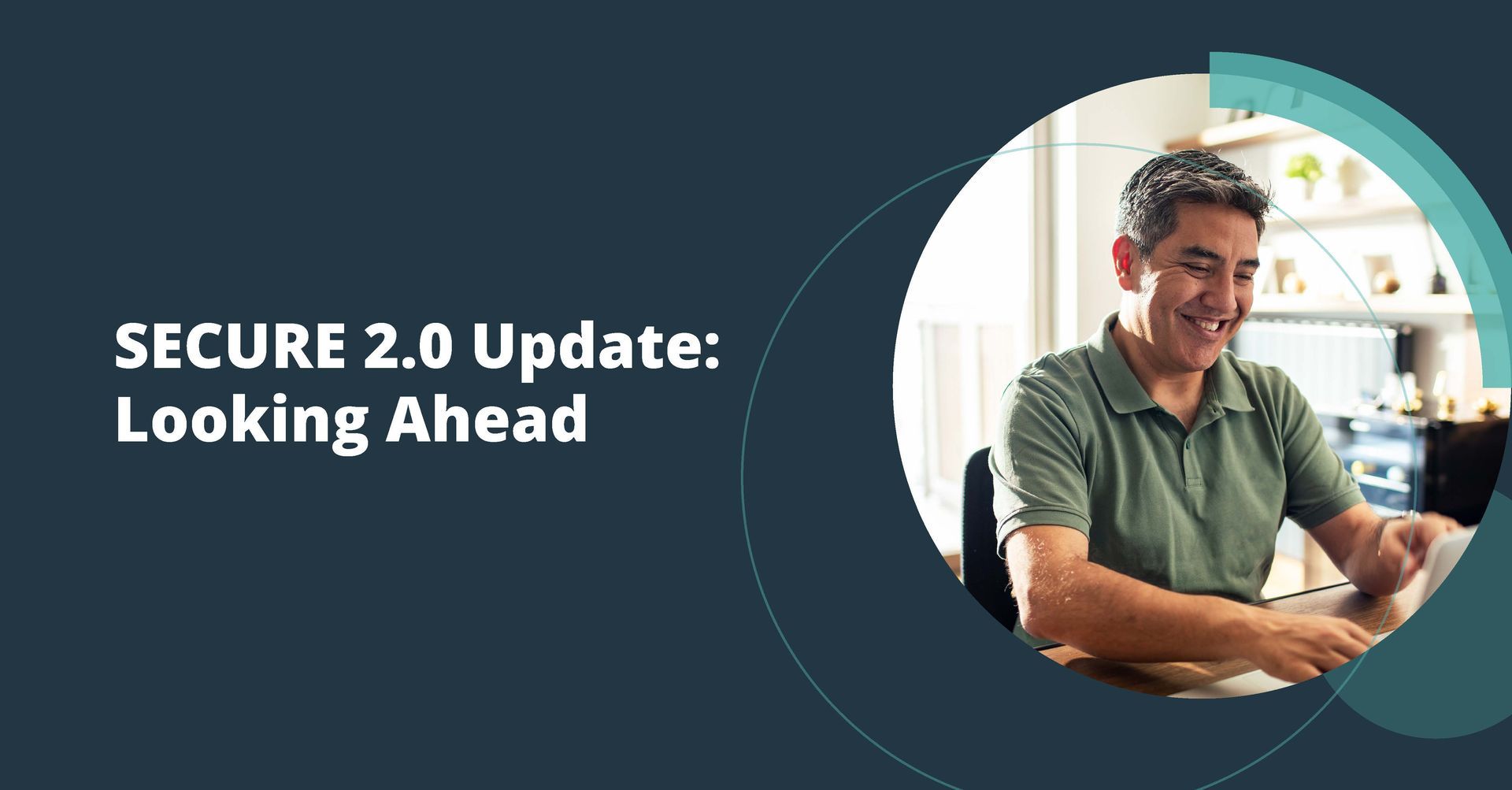
Some provisions of SECURE 2.0 have already taken effect, and more will become effective soon. For plan sponsors, preparation is the key. Starting early allows for a thorough consideration of how SECURE 2.0 provisions may impact enrollment, contributions, and other aspects of your 401(k) plan. This will help you align your plan with regulatory requirements while continuing to meet both employer and employee needs.

Cyber-crime is on the rise worldwide. As a result, growing numbers of organizations are taking critical steps to protect their valuable electronic data from hackers and other cyber criminals — a process known as cybersecurity. It’s serious business, and a trend retirement plan sponsors and committees should pay attention to.
